#Rayu Udon
Explore tagged Tumblr posts
Text
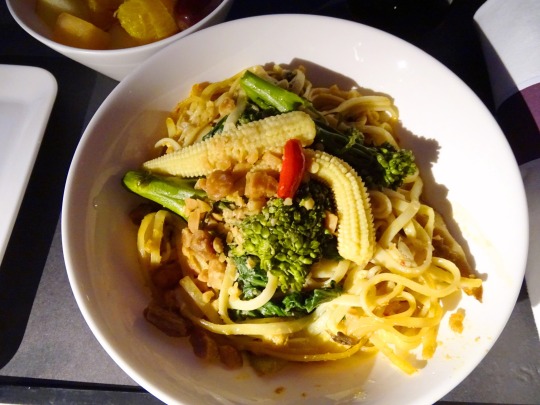


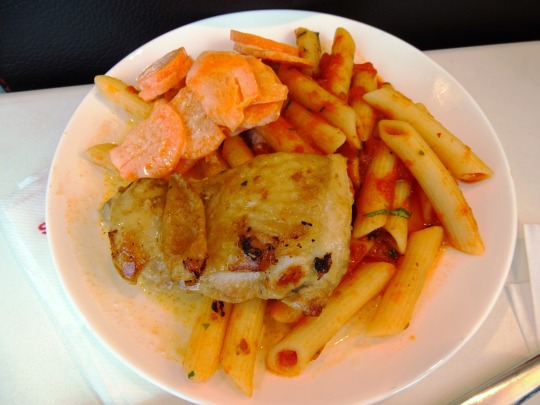


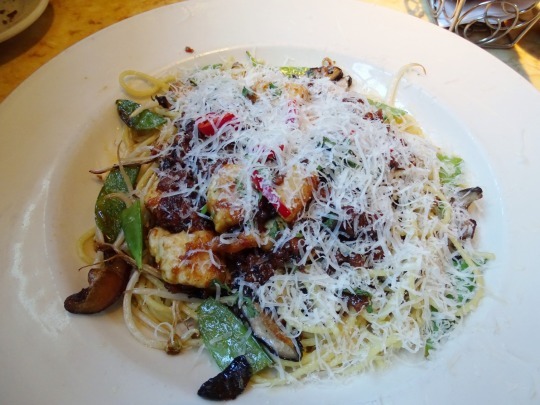


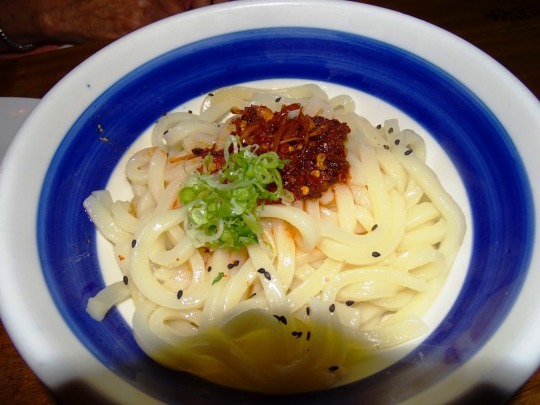
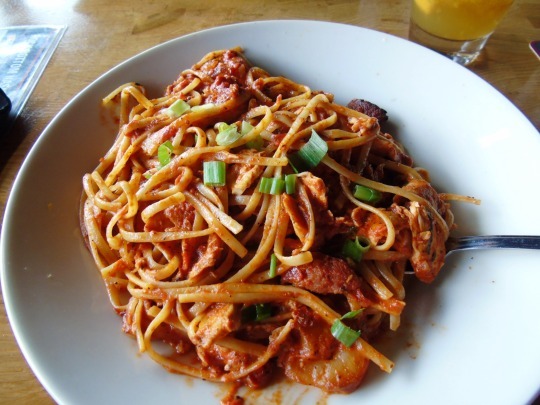



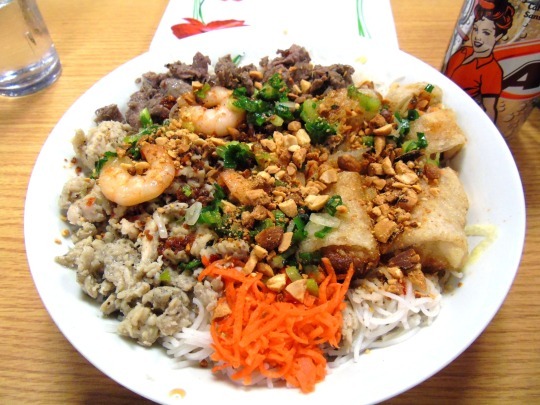

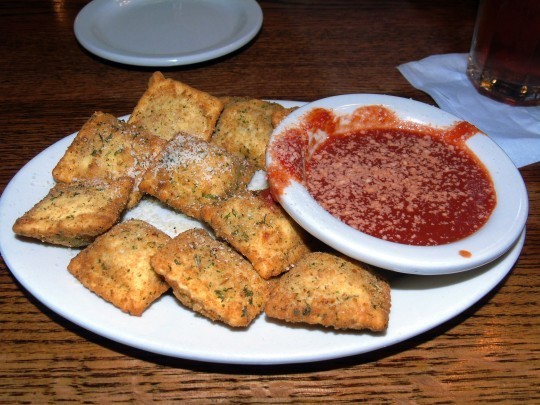

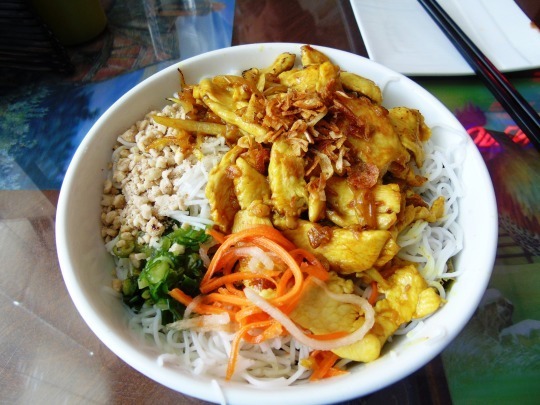
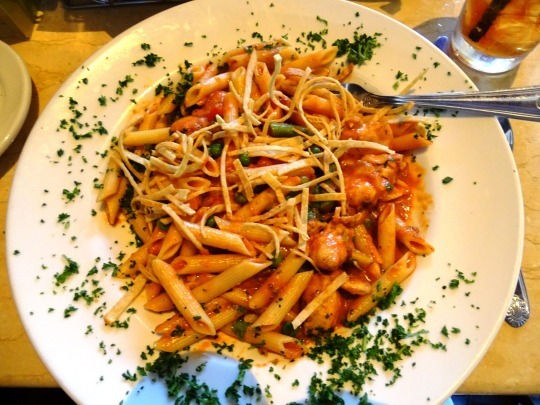






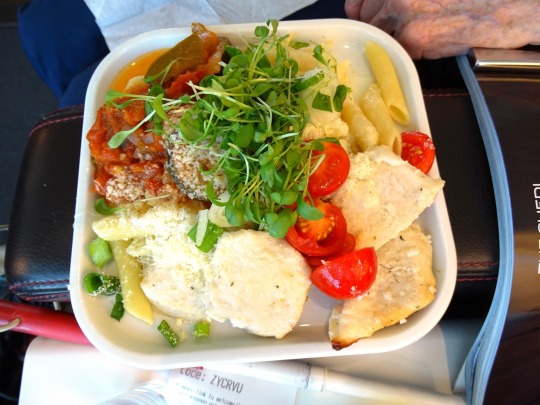
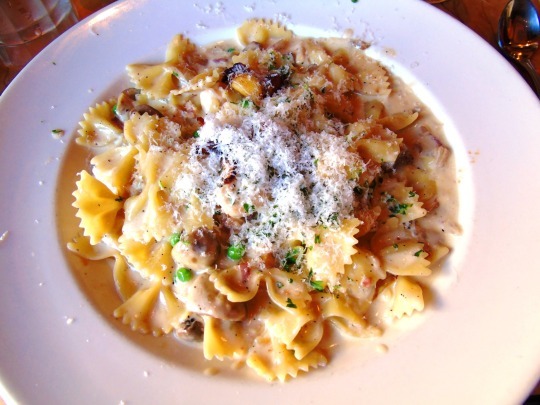
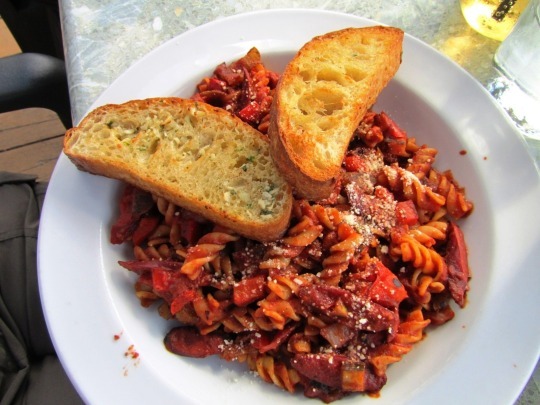
National Pasta Day
Life is too short, and I’m Italian. I’d much rather eat pasta and drink wine than be a size 0. - Sophia Bush
Picture this….a warm steaming pile of spaghetti in a rich red sauce, littered with seasoned sausage, black olives, and mushrooms served with crusty garlic bread on the side.
Or, perhaps the idea of a rich Chicken Fettuccine in a creamy garlic white sauce is more likely to be what blows your mind.
Pasta comes in over 600 shapes known to mankind, and their names are usually Italian words that are delightfully descriptive of their shapes. Spaghetti (‘cord’), vermicelli (‘little worms’), rotini (‘spirals’), fusilli (‘spindles’), tortellini (‘little cakes’), linguini (‘little tongues’), conchiglie (‘shells’), fettuccine (‘small ribbons’), penne (‘quills’) and capellini (‘fine hairs’) are the savory little goodies that are essential to any pantry.
While Italian food made it famous, that was actually only a gateway to pasta. Chinese Chow Mein and German Spaetzle are just a couple of the ways the world has taken pasta and fallen in love with it all over again.
And World Pasta Day is the perfect time to celebrate this love!
History of World Pasta Day
World Pasta Day was brought into existence as part of the World Pasta Congress on the 25th of October in 1995. Experts from all over the world came together to discuss the glories of the noodle, with particular emphasis on the importance of spreading knowledge of the world’s panorama of pasta. This organization uses World Pasta Day to promote the eating of pasta, along with its cultural and culinary importance.
The World Pasta Congress engages in everything from encouraging consumers to try new pasta to providing important information to institutions and promotions of this increasingly popular food. Every country is encouraged to celebrate the day in its own way while sharing the logo of the official organization and participating in the global strategy of World Pasta Day.
How to Celebrate World Pasta Day
Food days are simple and easy to celebrate, but they can come with a variety of layers as well. Look to these ideas for inspiration, then create your own ways to celebrate World Pasta Day:
Eat Pasta–and Lots of It!
One of the best ways to celebrate World Pasta Day is by preparing a favorite dish and enjoying the delicious flavors and textures that come along with that noodly goodness. There’s no better way to renew a deep appreciation for it than by wolfing down this healthy and semi-nutritious food.
Most people don’t enjoy eating pasta without any sauce, but the options for what to put on it range from the simple to the complex. Try it with a little melted butter and garlic. Cheese sauce (such as alfredo), tomato sauce (bolognese or marinara), and pesto are traditional options. But some people like to get super creative with unique flavors like butternut squash carbonara, avocado and mango sauce, or herbed white wine sauce. The options are virtually endless!
Host a World Pasta Day Party
Folks who are feeling like they want to share the day can go all out and host a World Pasta day party. This is a great way for everyone to come together to share their favorite pasta dish, or exchange recipe ideas with other guests to help the love of the noodle spread. Be sure to be prepared for one momentous night of rich and creamy carbohydrate overload. It may be that naps will be mandatory, but stomachs will most definitely be full!
For the truly daring, enhance the party by having participants only bring pasta dishes that they have never tried before. Try new noodle types, or even making your own pasta. Experiment with sauces and flavors that may be outside of the normal palate.
Try Making Homemade Pasta
Some people find it a little difficult and time-consuming, but the benefits of making fresh, homemade pasta are absolutely worth it! The easiest way to make it is by using an at-home pasta maker, which can be a little bulky to store in the kitchen but turns pasta-making into a breeze.
The recipe for pasta is fairly simple, using just a few ingredients. Basic pasta will consist of semolina wheat flour, eggs, olive oil and a bit of sea salt. Some pasta recipes don’t include eggs, while others might have a more unique flavor, such as spinach, sun-dried tomato, saffron, roasted red pepper and more.
Those who don’t have a pasta maker can certainly make it by hand, as it was done for hundreds of years in every home in Italy! It takes a little more work in the rolling, but it’s a fun, adventurous project in the kitchen. A food processor and stand mixer will help this process immensely, and a pasta drying rack is also a useful tool.
Try Something New (Or Very Old) In Pasta
This is the ideal day to get creative and experiment with different flavors and dishes. For instance, many people don’t know that Spaetzle was traditionally served with a sour sauce/gravy for Sauerbraten. It’s amazing! Imagine what else could unfold into the culinary world for those who will take World Pasta Day to broaden their horizons!
Attend World Pasta Day Events
All over the world, in various communities, people are celebrating pasta on this day. Get online or check out a local announcements board to find out which events might be happening in the area. For instance, some folks might have a pasta cook-off, while others might create a pasta festival. Those who can’t find a World Pasta Day event in their local area could certainly consider creating one! After all, it’s for the love of pasta.
Source
#stir-fried noodles with pecan#Jalapeno Mac and Cheese#Lemongrass Chicken Bowl#25 October#food#Spicy Chicken Chipotle Pasta#original photography#travel#vacation#World Pasta Day#WorldPastaDay#USA#Louisiana Chicken Pasta#Cajun Pasta#Rayu Udon#Beef Black Pepper#Canada#restaurant#FARFALLE WITH CHICKEN AND ROASTED GARLIC#Cajun Jambalaya Pasta#Pan Fried Noodles 'Udon'#Bacon Chicken Mac 'N Cheese#Bun Ga Xao Xao#Spicy Shanghai Noodles#Spicy Bison Peperoni & Roast Vegetables Pasta#Mac 'n' Cheese#Crispy Rice Noodle Tower
5 notes
·
View notes
Text
When I Crave Something Hearty and Homestyle, I Make Udon Gyoza
New Post has been published on https://foodloverrecipes.com/blog/when-i-crave-something-hearty-and-homestyle-i-make-udon-gyoza/
When I Crave Something Hearty and Homestyle, I Make Udon Gyoza
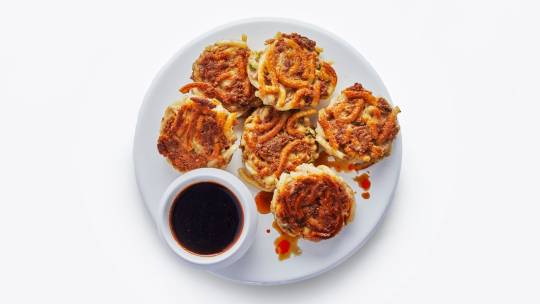
The only thing better than a good recipe? When something’s so easy to make that you don’t even need one. Welcome to It’s That Simple, a column where we talk you through the process of making the dishes and drinks we can make with our eyes closed.
In what feels like another lifetime, I was a bright-eyed student in a Tokyo suburb, living my absolute best life. Several months into the study abroad program, though, I started feeling homesick—not for anything in particular, just for something comforting. I was living alone in my own apartment, being as self-sufficient and responsible as any college student could be, clubbing on weekends and making the occasional bad choice, like drinking tequila and dancing until it hurt to move.
One weekend, my friend Matt invited me over for pre-club dinner with his host parents, the Watanabes. I’d shared a few dinners with friends’ host parents at this point, but this was the first time I was asked to help cook. We were going to be making udon gyoza, and Mrs. Watanabe put me right to work slicing scallions. Mrs. Watanabe prepped everything else while Mr. Watanabe showed Matt how to peel apples while keeping the peel in one piece.
Once we finished prep, Mrs. Watanabe sent us all to the dining room to snack on apples and drink beer while she finished up in the kitchen. A beer or two later, she came into the room with a platter of beautiful golden brown patties. As I told Mrs. Watanabe, they immediately became one of the best dishes I’d eaten since arriving in Japan. She laughed it off, saying they were nothing special, just a basic Japanese homestyle recipe she’d made hundreds of times.
But more than how great they tasted, this low-effort, inexpensive meal encompassed what I’d been missing about home—people coming together to cook a meal, sharing stories, laughing. It didn’t matter that none of us were related because in that moment, we were a little family, right down to their parental advice to “never stop experiencing new things and challenging yourselves” and their wave goodbye, telling us to have fun and be careful.
Thirteen years later, I’m still trying new things, but whenever I need something hearty and comforting, I find myself circling back to this recipe. Here’s how to make it:
Thaw 1 pound frozen udon noodles, then chop them into roughly 1-inch pieces. Add the chopped noodles to a large bowl, along with 1 pound ground pork, 2 eggs, ¼ cup thinly sliced scallions, 1 Tbsp. soy sauce, and ¼ cup potato starch (I’ve found that cornstarch and all-purpose flour work too). I usually add 2 cloves garlic, grated, and about 1 Tbsp. freshly grated ginger, but feel free to adjust those amounts to your preference.
Once all the ingredients are in the bowl, mix with your hands until well incorporated. Heat 1 Tbsp. vegetable oil in a large nonstick skillet over medium heat. Using a standard ice cream scoop or a ¼-cup measure, measure out balls of the udon gyoza mixture. Flatten each ball into a ½-inch thick patty in the palms of your hands, then place four to five patties in the hot skillet, taking care not to crowd the pan. Cover the skillet, and cook for 5 minutes, undisturbed, until deep golden brown. Flip the udon gyoza and cook, uncovered, for an additional 3 minutes, until cooked through. Serve with a dipping sauce made of equal parts soy sauce or ponzu and black vinegar, and as much rayu as you like.
Though we ate them as a meal that night, the Watanabes said they’re good as a snack or appetizer, or even served cold the next day in a bento box. I can’t really speak to how they are leftovers, though. No matter how many of these I make, they never seem to make it through the night.
Jarrett Melendez is a graphic novel writer and former cook living in Boston with his partner Stuart, and their collection of plush pigs.
0 notes
Photo
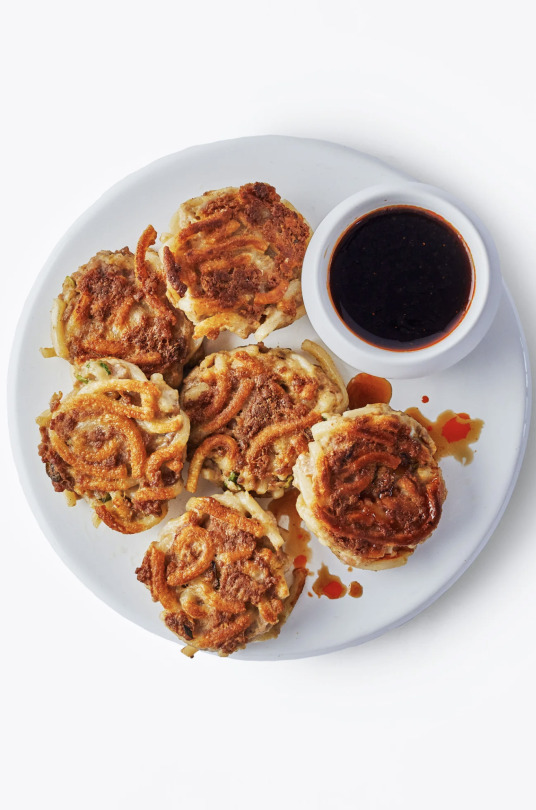
Udon Gyoza
Thaw 1 pound frozen udon noodles, then chop them into roughly 1-inch pieces. Add the chopped noodles to a large bowl, along with 1 pound ground pork, 2 eggs, ¼ cup thinly sliced scallions, 1 Tbsp. soy sauce, and ¼ cup potato starch (I’ve found that cornstarch and all-purpose flour work too). I usually add 2 cloves garlic, grated, and about 1 Tbsp. freshly grated ginger, but feel free to adjust those amounts to your preference.
Once all the ingredients are in the bowl, mix with your hands until well incorporated. Heat 1 Tbsp. vegetable oil in a large nonstick skillet over medium heat. Using a standard ice cream scoop or a ¼-cup measure, measure out balls of the udon gyoza mixture. Flatten each ball into a ½-inch thick patty in the palms of your hands, then place four to five patties in the hot skillet, taking care not to crowd the pan. Cover the skillet, and cook for 5 minutes, undisturbed, until deep golden brown. Flip the udon gyoza and cook, uncovered, for an additional 3 minutes, until cooked through. Serve with a dipping sauce made of equal parts soy sauce or ponzu and black vinegar, and as much rayu as you like.
0 notes
Text
Nơi khách ăn xong phải tự rửa bát
New Post has been published on https://khachsanthanhdong.com/noi-khach-an-xong-phai-tu-rua-bat.html
Nơi khách ăn xong phải tự rửa bát
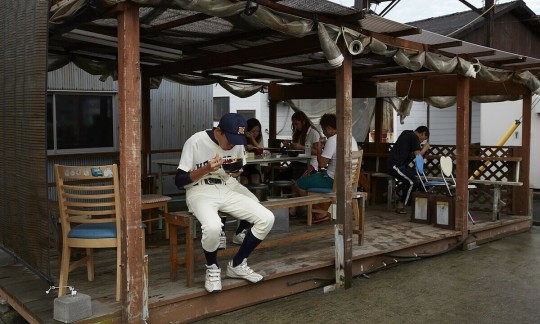
Nhật BảnMuốn ăn mì udon nổi tiếng Okayama, thực khách phải tới thật sớm để xếp hàng. bởi vì nơi bán đặc sản này chỉ mở cửa một tiếng mỗi ngày.
Nơi bán món mì udon tươi trứ danh này chính là Matsuka Seimen, nằm ở tỉnh Okayama. Nhưng điều thú vị hơn nữa là Matsuka không phải nhà hàng, nó là một xưởng làm mì truyền thống, do gia đình họ Matsuka điều hành. ngày nay, chủ nhà hàng là ông Youichi Matsuka, sống cùng vợ và đại trượng phu, Taichi.
Dù đông khách, gia đình Matsuka không muốn mở nhà hàng nhưng mà vẫn tiếp tục giữ mô hình xưởng sinh sản mì sợi. Ngày nay, nhà Matsuka đã cung ứng bát cho du khách sử dụng mì tại quán, nhưng họ phải tự dọn rửa sau khi ăn.

Với các đơn đặt hàng dày đặc của siêu thị, chủ siêu thị, ông Youichi Matsuka luôn bận rộn chế biến mì, còn vợ ông, bà Keiko, cân và chia mì vào hàng trăm gói nhỏ. Taichi, đại trượng phu của họ có nhiệm vụ làm bột, vớt mì vừa luộc nóng sang phần làm mát, tương trợ cân và đóng gói để giao hàng. Ảnh: BBC.
Từ năm 2004, nhà Matsuka đã nổi tiếng trong việc sinh sản và cung ứng sợi mì udon tươi cho các siêu thị địa phương. Hương vị và chất lượng của sợi mì rất thơm ngon, nhiều người đã yêu cầu gia đình Matsuka dành riêng vài mẻ mì tươi để nấu ngay sau khi cán. nhị năm sau, họ đồng ý với lời yêu cầu và mở màn nấu thêm mì udon tươi, nhưng chỉ bán từ 6h tới 7h. Khách hàng phải tự mang theo bát đũa.
thuở đầu, chỉ có người dân địa phương tới ăn. Sau đó, cơ sở mì thu hút thêm nhiều du khách. Ngày nay, quang đãng cảnh thân thuộc ở nơi này là nhiều người xếp hàng dài đợi tới lượt ăn mì từ 6h sáng. Cuối tuần, nơi đây phục vụ khoảng 200 người. Phương châm của Matsuka Seimen là: “Ăn mì tươi vào buổi sáng sẽ giúp quý khách có một ngày tuyệt vời”. Người dân tin rằng mì udon giúp làm ấm thân thể và cung ứng nhiều năng lượng để làm việc.
Xưởng sinh sản từ 50 – 75 kg udon mỗi ngày, công thức vẫn giống như cách đây 32 năm, khi bố của ông Youchi mở màn bán mì sợi. Ông Youichi tin mì là “vật thể sống”. Những người thợ làm mì thay đổi tỷ trọng giữa các loại bột udon và nước, cũng như thời kì nghỉ của bột tùy theo độ ẩm và nhiệt độ không khí xung quanh. Họ đổ bột mì, bột uchiko (bột chuyên dụng làm mì udon) vào máy nhào và thêm nước. Sau khi bột đã nhuyễn và được nhào khoảng 7 phút, ông Youichi mang các miếng bột ra khỏi máng nhào và thả vào bồn nhựa, nơi trộn bột bằng tay.
Tiếp theo, ông phủ bột bằng một miếng vải tinh khiết, đi tất mới vào chân và nhào bột thêm vài phút nữa bằng cách dẫm lên nó một cách nhịp nhàng. Bột được ủ trong tủ lạnh tới ngày hôm sau. Vì bột quá cứng để cán hoàn toàn bằng tay, nên nó được cán trước bằng máy. Sau đó, bột được cán bằng tay thêm một lần nữa và đưa qua máy cắt để làm thành sợi mì.
Mì sau khi cắt sẽ được đun sôi và phục vụ ngay ngay thức thì. “Nếu không ăn mì sau 30 phút khi đã nấu chín, udon mất đi vị ngon và trở thành một thứ hoàn toàn khác”, Youichi giảng giải.
Ngoài số mì được phục vụ trực tiếp vào buổi sáng, lượng lớn sợi mì udon còn lại sẽ được đóng gói trong các gói nhỏ để ăn tại bệnh viện, trường học hoặc bán tại các siêu thị địa phương. Trong những trường hợp đó, mì sợi ngay ngay thức thì được ngâm vào nước lạnh sau khi được đun sôi nhị lần. “Việc này làm cho mì sợi ngừng chín và giữ được kết cấu, hương vị”, Taichi san sẻ.
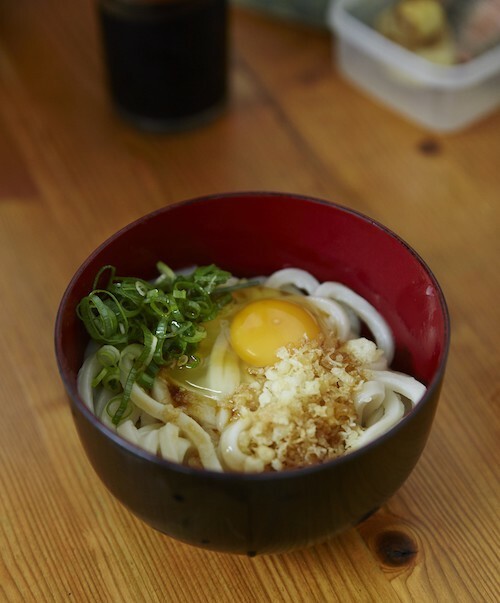
Giá mỗi tô mì phụ thuộc vào số lượng đồ ăn kèm và kích thước “sho” (tô nhỏ) hoặc “dai” (tô lớn). Mức giá khoảng 350 – 500 yen (75.000 – 110.000 đồng). Ảnh: Heated/Medium.
Sau khi mì được nấu chín, một trong ba người thân Matsuka đưa bát mì cho khách hàng và họ được tự chọn các loại gia vị. Các gia vị ăn kèm được xếp dọc theo tường cạnh khu vực làm mì như trứng sống, hành lá xắt nhỏ (negi) và gia vị cay (taberu rayu). không chỉ có thế, nước tương, súp nhúng mì, ponzu (tương đậu nành), thịt cá ngừ khô (katsuobushi) và bột chiên giòn (tenkasu) cũng được đặt sẵn trên chiếc bàn hẹp, dọc theo hành lang nơi mọi người xếp hàng chờ ăn udon.
Món mì được yêu thích ở đây là kamatama (mì udon với trứng sống và gia vị ăn kèm tùy chọn). Mặc dù có nhiều món mì nhiều chủng loại khác như udon cà ri hoặc udon củ cải trong thực đơn ăn sáng, hồ hết thực khách vẫn chọn mì udon nguyên phiên bản.
Xưởng mì Matsuka Seimen nằm ở số 2-1063-3 Kojimakaminocho, TP Kurashiki, tỉnh Okayama. Du khách có thể tới đây bằng xe điện ngầm, từ ga tàu Kaminocho, chỉ cần đi bộ một quãng ngắn tới quán.
Điểm tham quan nổi trội nhất của tỉnh Okayama là vườn Korakuen, được xếp hạng là một trong ba khu vườn đẹp nhất ở Nhật phiên bản. Lâu đài Okayama nổi tiếng cũng nằm đối diện khu vườn. Okayama được nhắc tới trong câu chuyện “Cậu tí hon xíu quả đào Momotaro”, vì vậy du khách có thể tìm hiểu lịch sử Nhật phiên bản thông qua câu chuyện về người nhân vật huyền thoại và tham quan một số bảo tồn nơi đây.
Ngân Dương (Theo BBC)
Info: https://khachsanthanhdong.com/
0 notes
Text

Bismillah
Cerita lucu beberapa hari ini.
Beberapa hari lalu, pas banget lagi tunduh-tunduhnya bobo siang, umarian udah tidur, kaka masih main, ummi mau reup tibra, tetiba babah telpon, minta disusulin ke bank bawa berkas AJB, buku tabungan ummi dan KTP ummi, asap dengan segera, hmmm ngedadak dan aga kesel sebenernya haha lagi mules haid gak pengen kemana-mana, antara pengen nolak tapi gabisa karna prosesnya gabisa diwakilin buat mutasi ratusan juta harus ke teller langsung, dan Urgent, harus sama ummik, akhirnya dengan tunduh dan lapar kita ngegocar sambil bawa helm. Di mobil kita tidor 😅
Terus hari ini. Udah banget mau bobok tibra, ditelpon babah lagi. Mii naik gocar ke PVJ yaa, buka rekening Jenius di booth, di bank udah mau tutup, laaaaah tadinya mau sama babah sendiri pan atas namanya. Tapi karena di PVJ wkwk berangkatlah kita karna ada barang yang diincer.
Tadi rencana (niat ummi) mau sekalian me time sightseeing gitu apa kek beli buat diri sendiri sama ada barang yang diincer. Nak anak biar di playground barang sejam sama bapake, karena tadi Babah udah bilang sok ummi belanja aja mau beli apa boleh, anak2 babah yang pegang.
Tapi gatot deh, karna di playground pertama ada badut, rainy takut badut, mau ke playground kedua babahnya keburu cari alesan lain kwkw, gamau pulang sore bisi keburu hujan badai kita kan naek motor dan biar hemat juga sih ga bayar tiket playground wkwkwk, dan anak2 gak nangis minta ke playground, amaziiing, kalo sama ummik udaaah ditagih2 sepanjang jalan ke parkiran mau balik ke playground wkwkw. Bujuk rayu babah selalu berhasil, suami yang menenangkan (hati dan dompet) hahah.
Babah kalo ke supermarket atau pasar berdoa dulu, dan selalu di qabul sma Allah. Pas smpe rumah, ummi beli apa aja tadi buat ummi? Engga beli apa2 haha tadi end up beli barang buat menunjang olahraga babah (doi lagi hobi fitness dan olahraga sunnah) sama beli mainan anak2 aja, emaknya kaga beli apa2, karena emang barang yang dipengen gak ada, begitulah emakk bingung mau beli apaan, ingetnya suami dan anak mulukk, padahal banyak pilihan, tapi gitu we nyah, back to shopeee peee peee, belanja tenang dan nyaman 😂
Tapi tadi bisa dine in maka favorite udon, alhamdulillah yeay udah lama gak makan udyooonnn di mejanya, udahnya perut mulesss, makan junkfood, berasa pengen mual inih liyeur, kembali ke JSR dan rebus panggang 😆
Ini ceritaku hari inih 😂
Alhamdulillah wa syukurillah, selalu ada hikmah. Harus taat sama suami selama tidak menyelisihi syariat. Kita yang saling melengkapi dan mengingatkan. I love you my WiseMan. 🤗
0 notes
Text




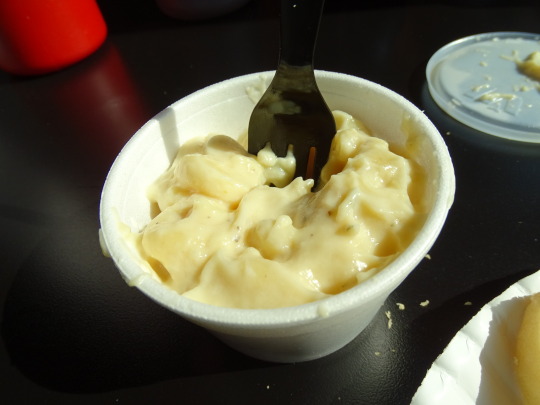
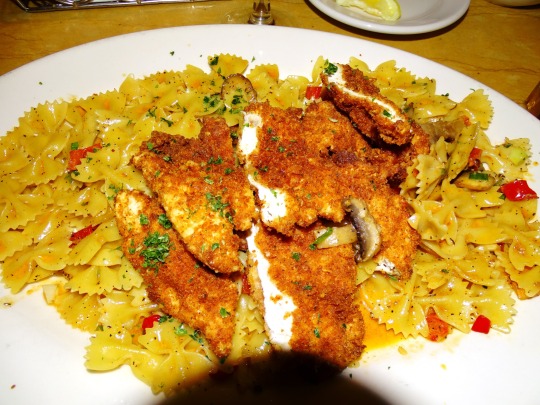




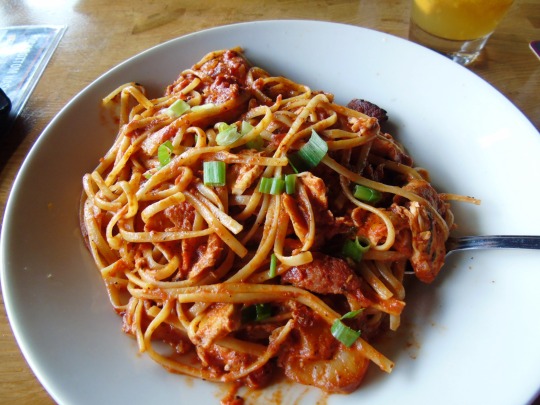
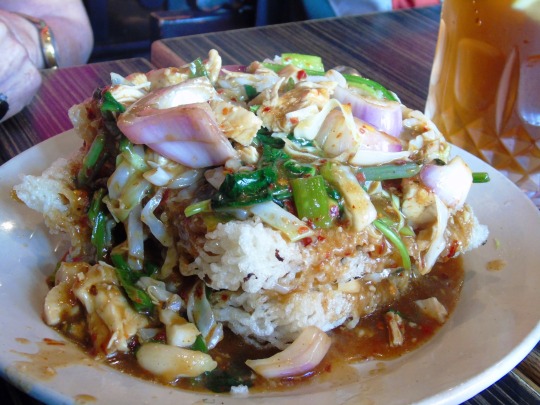


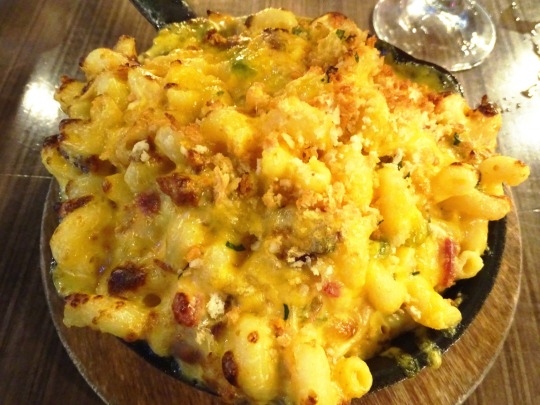
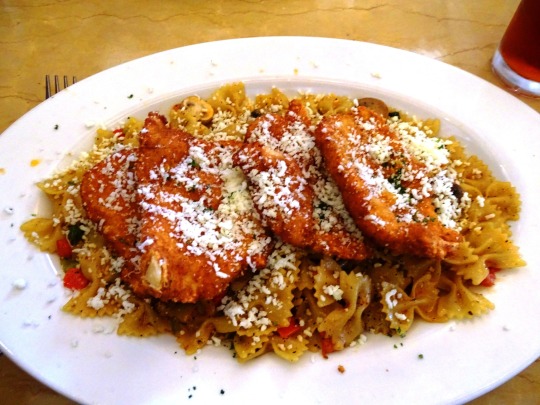





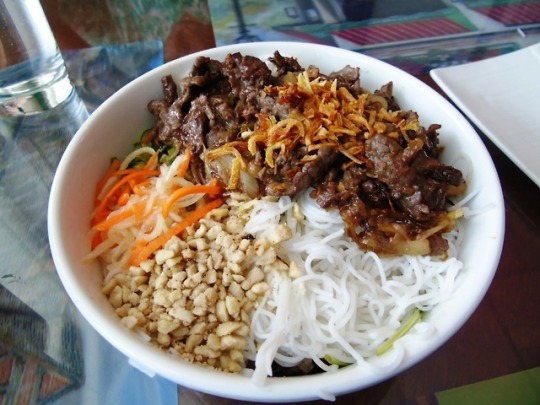







National Pasta Day
No matter where it started or how it became so popular, pasta is a simple and versatile dish that is absolutely worth celebrating.
Fusilli, Penne, Spaghetti, Capellini and Fettuccine, pasta comes in a myriad of shapes and sizes. Pasta acts as a sort of blank canvas for the almost infinite variety of sauces that can be made to pair with them.
And National Pasta Day is the perfect time to learn more about and celebrate all things pasta!
History of National Pasta Day
Historians don’t completely agree on the origins of pasta. Many people believe that pasta originated in Italy, while others say that it came all the way from China when Marco Polo was on his adventures in the 13th century.
Still other historians claim that pasta is actually much older than that, to the 4th century BC. In fact, in the place that is now Italy, an Etruscan tomb shows pictures of natives making something that appears to be pasta.
Even Greek mythology gets involved in the stories about the origination of pasta. The god Hephaestus, known as Vulcan, made a device that would create long strands of dough, which some people think may have been a version of pasta or spaghetti.
Not long before he became the President of the United States, Thomas Jefferson is believed to have brought pasta to the US after a trip to Paris in the late 1780s. After eating what he referred to as “macaroni” in France, Jefferson brought two cases back with him and helped influence its popularity in America.
National Pasta Day Timeline
4th Century BC
Pasta is traced back to Etruscan civilization
The Etruscan civilization shows evidence of people making pasta in the area that is now known as Italy.
12th Century AD
Pasta-like noodles are made in China
During the Shang Dynasty, in what is now Northern China, noodles are made from rice or wheat flour.
16th Century AD
First pasta maker in Italy
Beginning at the court of Ferrara and then adopted by the Neopolitans, the pasta maker Christoforo Messisbugo documents what he refers to as the ”macaroni invention”.
Late 1780s
Thomas Jefferson brings pasta to the US
After an extended trip to Paris, the future US President brings crates of pasta back from Europe to America.
1877
Barilla Pasta Company is founded
Founded in Parma, Italy, the Barilla company will eventually become the largest pasta company in the world.
How to Celebrate National Pasta Day
Get into the spirit of this delightful day by inviting friends and family to enjoy and celebrate National Pasta Day in a variety of ways. Consider taking part in some of these ideas, or come up with some of your own:
Enjoy Eating Pasta
Of course, National Pasta Day is the right time to enjoy eating some pasta! And the great thing is that there are so many different options of ways to enjoy pastas.
Invite some friends or family members over for a meal and experiment with some new and interesting recipes for pasta. Try out some unique ideas for making sauces for pasta, such as these:
Truffle Cream Pasta Sauce. Enjoy this exquisite sauce made from special truffle oil, heavy cream, butter and Parmesan cheese. Serve it on penne or linguini.
Frutti de Mare Pasta Sauce. A seafood based pasta sauce, the name literally means “fruit of the sea”. The sauce is fairly quick to cook up, including mussels, wild shrimp and squid tentacles that are cooked in a base made from white wine, basil, garlic and arrabbiata tomato sauce. Serve on long noodles like spaghetti or fettuccine.
Arrabbiata Pasta Sauce. A simple sauce made from tomatoes, garlic and dried chili peppers, this one is delicious when cooked in olive oil. This type of sauce originates from the region of Rome and is a classic sauce that can be served on almost any pasta, from spaghetti to zucchini noodles.
Salsa di Noci Pasta Sauce. This rich and creamy pasta sauce is made from cream, walnuts, Pecorino Romano cheese and fresh herbs. Serve the sauce of short, freshly-made pastas.
Learn Fun Facts About Pasta
Enjoy National Pasta Day and spread the word to friends and family members by sharing various delightful bits of trivia. Try out some of these fun facts to get started:
The average person living in Italy eats approximately 51 pounds of pasta every year!
Italy produces approximately 2.75 million tons of pasta each year, while the United States produces around 1.9 million tons annually.
At least 600 different shapes of pasta are made all around the world, and each type has its own purpose.
Before pasta machines were invented, the dough for pasta was kneaded by foot as workers would walk over large batches of the dough!
Get a Discount for National Pasta Day
Some restaurants that serve pasta may choose to offer a special discount in honor of National Pasta Day! In celebration of the day, check out which national restaurant chains have been known to offer certain deals. Consider enjoying pasta places such as Noodles & Company, Olive Garden, Buca di Beppo, Carrabba’s Italian Grill and many others.
One great thing about celebrating National Pasta Day at a local restaurant is that it means someone else will make the meal for you – and they will even clean it up! Plus, when eating with a group, it’s fun for everyone in the party to order a different dish so everyone can try something new.
Take a Trip to Italy
In celebration of National Pasta Day, take the opportunity to head over to the place that does pasta best – Italy! What could be a better place to really soak up the delicious and delightful flavors of pastas and sauces?
Some people might want to make their decisions about travel based on the types of pasta that different regions of Italy have to offer. Take a look at some of these pastas hailing from different regions in Italy:
Farfalle from Lombardy. Also known as ‘bow-tie pasta’, farfalle may be best enjoyed in the north-central region of Italy where Milan, and Bergamo are located.
Penne from Campania. These delightful little tubes of pasta work well to hold the sauce for bursts of flavor. Enjoy dishes with penne pasta in the region of Campania, which is the south-western region that includes Naples.
Ziti from Sicily. Similar to penne, ziti are short tubes of pasta that are often baked after being covered in sauce. Head down to the largest Mediterranean island at the tip of Italy to enjoy this pasta shape in Sicily.
Gigli from Tuscany. Translated to mean ‘lilies’, Gigli pasta is a light and thin style that makes just a slight twirl. Gigli is from the city of Florence where the lily acts as a local emblem.
National Pasta Day FAQs
Is pasta vegan?
Yes, almost all packaged pastas are 100% vegan, though some types of noodles do contain eggs.
Did pasta come from Italy?
While some historians believe pasta came from Italy, others say that Marco Polo actually brought it from China.
Does pasta have gluten?
Yes, most standard pastas are made from flour and have gluten, though gluten free pasta is available made from rice, corn or other grains.
Does pasta have protein?
Traditional pasta is made from wheat flour and has about 8 grams of protein per serving. Some pastas made from lentils, edamame and chickpeas should contain more protein.
Is pasta healthy?
If it’s made from whole grains, pasta can provide fiber, and it is also a good source of energy from carbohydrates, which is healthy in moderation.
Source
#stir-fried noodles with pecan#Jalapeno Mac and Cheese#Lemongrass Chicken Bowl#National Pasta Day#NationalPastaDay#17 October#food#Spicy Chicken Chipotle Pasta#FARFALLE WITH CHICKEN AND ROASTED GARLIC#Cajun Jambalaya Pasta#Louisiana Chicken Pasta#Cajun Pasta#Pan Fried Noodles 'Udon'#Bacon Chicken Mac 'N Cheese#Bun Ga Xao Xao#travel#restaurant#USA#Canada#original photography#Spicy Shanghai Noodles#Rayu Udon#Spicy Bison Peperoni & Roast Vegetables Pasta#Mac 'n' Cheese#Crispy Rice Noodle Tower#vacation
5 notes
·
View notes
Text
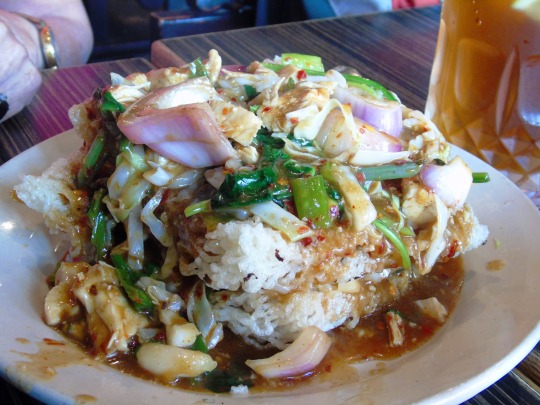
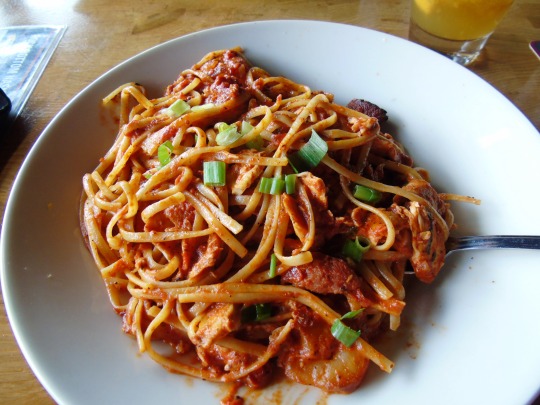

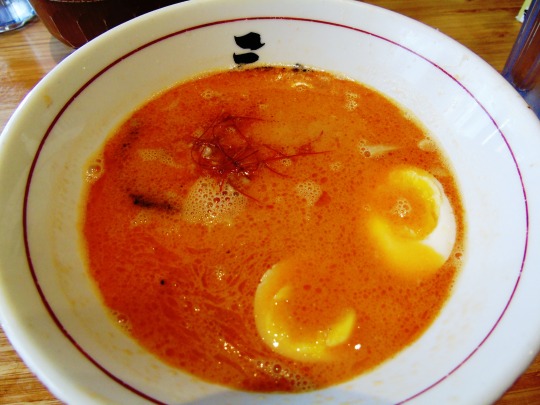

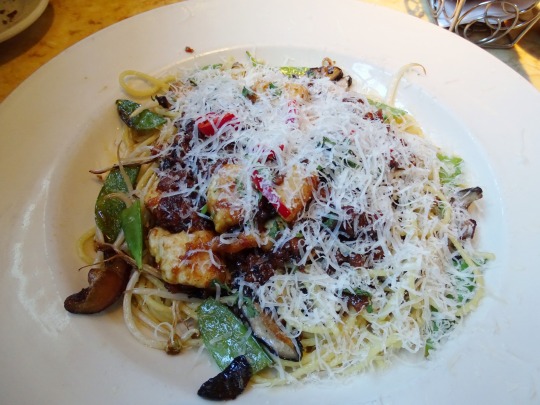


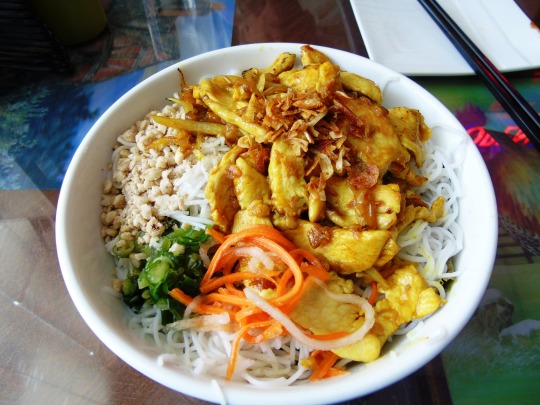
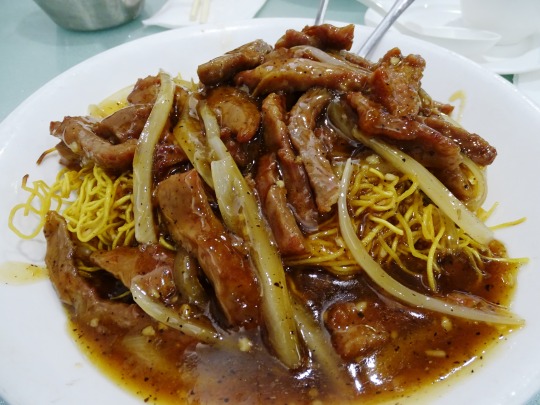
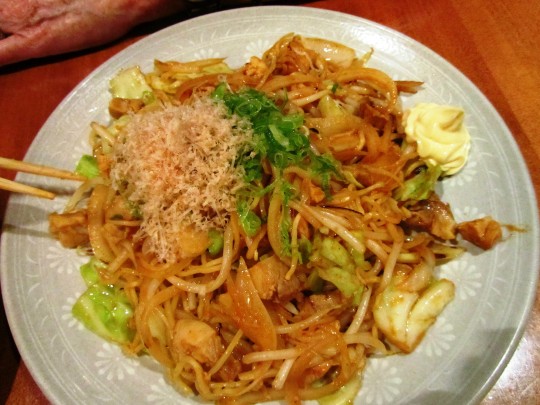
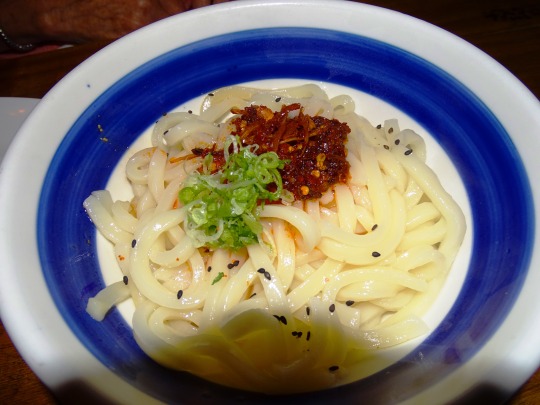

National Noodle Day
Spaghetti, ramen, ziti, egg noodles…most of the best foods are noodles. Try a new kind today, or go out and treat yourself to one of the world’s favorite dishes.
The steam rising from a bowl of noodle soup floats along and dissipates almost like a thing of magic, with rich aromas and the promise of a deliciously warmed belly. In cultures all over the world, noodles have served as a foundation of comfort food, and National Noodle Day celebrates this long history and the place they play in everyone’s life today.
History of National Noodle Day
It is estimated that the origin of noodles dates back as far as two thousand years, or possibly even further. The first mention of noodles in historical records is in a book from the Eastern Han period that dates from between 25 and 220 BC. This unleavened dough has been prepared in many ways, throughout many cultures, using many different ingredients. But one thing remains the same–noodles are almost always delicious!
Noodles–inexpensive, simple, and rather filling–has been a mainstay of the working class for many years. The instant cup of noodles heated quickly in the microwave during a short lunch period. The mainstay of the poor and college-bound, pre-packaged Ramen noodles are often the foundation of a person’s first culinary ventures, as they try to turn the only meal they can afford into something akin to food.
But noodles aren’t only cheap and filling! Now, consider the rich and flavorful bowl of mom’s chicken noodle soup, full of the rich flavors of chicken and carrots, and floating among them are the obligatory egg noodles, which somehow are just the thing to tie this delicious bowl of nutrition together.
For anyone who was born into Italian family, chances are they’ve experienced every kind of noodle the mind can imagine and a few to boot! Rigatoni noodles, spaghetti noodles served with a rich red sauce exploding with flavor, Asian Rice Noodles, or even Fettuccine noodles coated in a thick heavy Alfredo sauce interspersed with bits of chicken.
Noodles have been with mankind in nearly every culture out of history, and National Noodle Day reminds us that this basic and staple food is still the best way to fill a hungry belly at the end of the day.
How to Celebrate National Noodle Day
National Noodle Day can be loads of fun! Making noodles, eating noodles, and enjoying noodles with friends. Try these ideas for spending National Noodle Day:
Go Out for Noodles
Whether at a fast food joint or a sit-down restaurant, noodles are fairly easy to come by in a variety of restaurants.
Noodles and Company, in the United States, is a fast-casual dining place that focuses each of its dishes all around the noodle. Their noodles are all made by hand, and their menu ranges from standards like Macaroni & Cheese and Spaghetti & Meatballs to more unique offerings such as Alfredo MontAmore with Parmesan Crusted Chicken or Grilled Orange Chicken Lo Mein. They also offer gluten-free and vegetarian options for those with certain dietary needs.
It’s a noodle lover’s dream come true!
Get Clever with Ramen Noodles
Those little rectangular packets of dried noodles with a smaller pack of flavorings inside can be used for more than just making some soup! As it turns out, they’re extremely useful to have around the kitchen for a variety of needs. Try out these ways to use those ramen noodles:
Make “Breadcrumbs”. The hard noodles can be crushed up into tiny granules (with a bit of the seasoning packet included). These work well as a substitute for recipes that call for breadcrumbs, such as schnitzel or meatballs.
Use as a Dessert Topping. This might be surprising but those crispy noodles, when cooked with cinnamon and sugar and then fried, offer a delightful chopped topping that can replace nuts on ice cream sundaes or other desserts.
Make Burger Buns. The great thing about ramen noodles is that, once cooked, they can be formed into almost any shape desired. Some people like to add a bit of egg, salt and herbs, then shape them into buns and fry them. These can be used for hamburgers or veggie burgers.
Add Zest to Salads. Take that boring salad to the next level by adding the crunch of pizzaz of ramen noodles. Simply crush the dry noodles and toss them into a coleslaw and top with an Asian dressing. Delicious!
Try a New Kind of Noodle
In a world of thousands of varieties of noodles, the best way to celebrate National Noodle Day is by reaching beyond your comfort level and trying something new. If your culinary experience with noodles is limited to Instant Cup a Soup and Spaghetti, it’s time to try something new.
Explore the rice or buckwheat noodles from your local Asian store, or discover exactly what a Manicotti noodle is and what it is used for! You’ll find yourself marveling at the sheer variety of noodles and noodle dishes there are, enough to have a different dish every day for years!
Share Noodles with Others
Celebrating National Noodle Day with the community can be loads of fun. Take a noodle dish to the office to share with coworkers. Or invite a few friends or family members over to enjoy a meal with many courses–all of which include noodles!
Source
#Pan Fried Noodles#Crispy Rice Noodle Tower#Ramen Noodles#travel#USA#food#original photography#restaurant#Spicy Shanghai Noodles#Rayu Udon#Cajun Pasta#Spicy Tantan Ramen#Tonkotsu Black Ramen#Beef Black Pepper#Canada#Bun Thit Bo#National Noodle Day#vacation#NationalNoodleDay#6 October#pasta
2 notes
·
View notes
Text

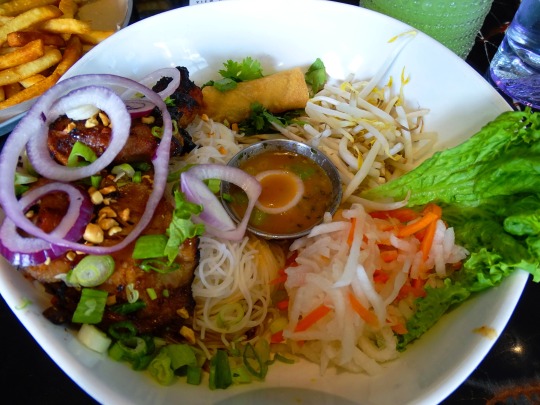
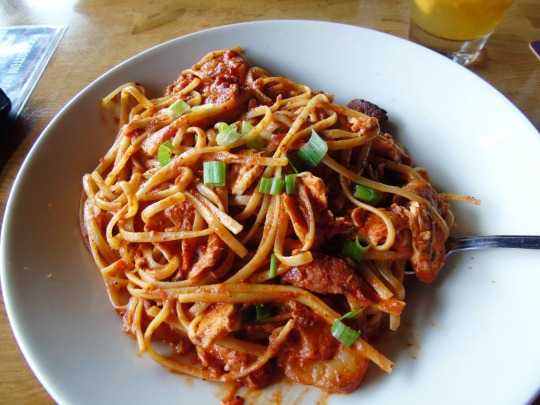


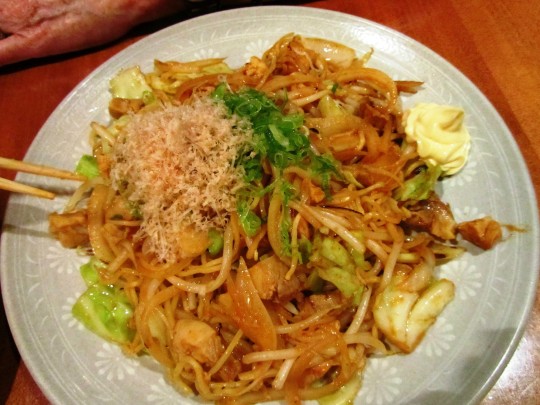





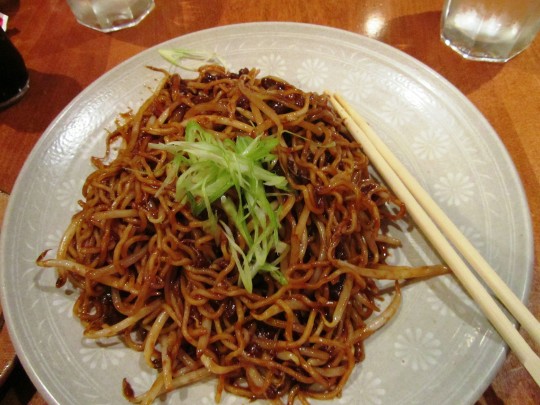



National Spaghetti Day
Savor your favorite Italian dishes from carbonara to meatballs, sign up to a pasta-making class or watch a thrilling Spaghetti Western.
One of the world’s favorite dishes, spaghetti is more than deserving of its own little day. And because it is both simple and delicious, spaghetti is the perfect dish to make to bring out your inner chef, even if you don’t have all that much cooking experience!
The history of National Spaghetti Day
Many people don’t know that the first historical reference to boiled noodles suggests that the Arabs invented the dish thousands of years ago, long before it became a staple of Italian cuisine.
What’s especially remarkable about this is that historical records actually refer to dried noodles being purchased from a street vendor, which means that pasta has been sold in stores since at least the 5th century A.D.! Of course, today we associate pasta with the Italians, who revolutionized the dish and invented a wide variety of pasta shapes.
The first Western pasta was likely long, thin forms made in Sicily around the 12th century; till this day, spaghetti is the most common round-rod type of pasta and in Italian, “spaghetti” means “little lines.” However, the popularity of pasta only spread across the whole country of Italy after the establishment of pasta factories in the 19th century, substantially shortening the time needed for making dishes like spaghetti and enabling the mass production of pasta for the Italian market.
The steady flow of Italian immigrants to the United States brought traditional Italian dishes with it, and spaghetti was offered in restaurants as early as the 19th century. Spaghetti then gained popularity all over the world, with Venezuela, Tunisia and Greece some of the biggest pasta consumers, alongside Italy and the United States. The US, for example, will consume over two and a half million metric tons of pasta over the course of a year, a significant proportion of which will be spaghetti!
National Spaghetti Day Timeline
1154 A.D. Edrisi mentions pasta made in Sicily
In his vitally important work, The Book of Roger, explorer and author Edrisi (or Idrisi), chronicles his observations of a Sicilian town called Trabia. He writes about how the inhabitants make pasta from wheat, shaped into long strands, and export the product for sale in other regions.
13th Century Spaghetti-like noodles arrive with Marco Polo
One story about the origin of spaghetti involves spaghetti-like noodles being brought back from China by explorer Marco Polo. The first versions of this are likely made from rice flour but perhaps evolve into something made from the more available durum wheat grains.
1928 Chef Boyardee’s canned spaghetti hits the market
Named after Italian immigrant and restaurant owner Hector Boiardi, this company develops after locals want to buy this delicious sauce to take home in cans. The demand eventually catalyzes the convenience foods of canned pasta, including spaghetti, ravioli and other noodles.
1953 First “National Spaghetti Day” is promoted in Washington, USA
In an effort to get people to come to the restaurant, Horton’s of Walla Walla, Washington, ran promotions declaring every Thursday as “National Spaghetti Day”.
1969 The first Old Spaghetti Factory opens
Run by Guss and Sally Dussin, this quintessential family restaurant launches in Portland, Oregon, USA and features a family favorite recipe for Spaghetti with Mizithra Cheese and Browned Butter.
How to make spaghetti
Spaghetti is made from milled wheat (flour) and water and comes in both fresh and dried forms. Traditionally it’s made using durum wheat that’s roughly ground – the flour produced is ideal for making pasta as its coarseness helps bind it to the sauce. Nowadays there are of course a variety of other types, including wholewheat and gluten free options.
Once prepared, the dough can be turned into the classic spaghetti shape either by hand or by a machine, whether a pasta machine in a home kitchen or an extruder in a factory. Whatever the method for forming the pasta, it’s important to dry it carefully to avoid any spaghetti strings getting stuck together!
Although wholewheat is generally considered healthier than refined spaghetti, there are benefits to both types. While refined spaghetti is likely to contain higher amounts of iron and B vitamins, wholewheat contains more fiber and micronutrients along with fewer calories. Whichever type you prefer, spaghetti is rich in carbs and so is best enjoyed as part of a healthy diet – a nutritious sauce is therefore a great addition when eating spaghetti.
How to cook spaghetti
Although a relatively easy food to cook, there are still some tricks worth knowing for the perfect result. It’s a good idea to cook spaghetti al dente – firm but not crunchy! Chefs have various tips for preventing the pasta from sticking together, including using a pan that’s big enough, mixing some oil in with the water and ensuring that the water is boiling before adding the spaghetti (as the bubbling helps keep the strands moving). Seasoning the water before cooking will also ensure your spaghetti is nice and flavorsome.
Another top tip is to keep hold of what chefs refer to as ‘liquid gold’ – the starchy water produced by cooking pasta. While many of us simply drain this away once our spaghetti is ready, it can actually help emulsify and thicken the sauce. With spaghetti you can simply remove the pasta from the pan using tongs rather than a colander to save and make the most of this precious liquid.
When it comes to the sauce, there are many well-known spaghetti dishes, for example Bolognese and carbonara. Spaghetti and meatballs is another particularly popular option. Whatever your preferred sauce, be sure to season well with herbs such as basil, rosemary and oregano.
Spaghetti in popular culture
With their distinctive soundtracks, extreme violence and socio-political bent, Spaghetti Westerns such as Django, A Fistful of Dollars and The Good, the Bad and the Ugly became popular in Hollywood during the 1960s. Although these films had no relation to the food itself, the name of this movie sub-genre does highlight how synonymous spaghetti had become with the country of Italy, with Spaghetti Westerns also called Italian Westerns due to them stemming from Italian filmmakers.
One of the most iconic instances of this delicious dish in popular culture has to be the famous spaghetti eating scene in Disney’s Lady and the Tramp, where the two pooches, serenaded by the restaurant’s chefs, accidentally eat the same piece of spaghetti. Tramp even gives Lady the last meatball – if that’s not true love then what is!
With spaghetti so readily available in food shops, it’s no wonder that many of us know relatively little about its production process. Back in 1957 the British Broadcasting Company (BBC) played on viewers’ lack of knowledge to orchestrate what’s now known as the ‘spaghetti-tree hoax’, a fake segment broadcast on April Fools’ Day that showed a Swiss family collecting dangling strands of spaghetti from trees. Suffice to say many were fooled by the reputable broadcaster’s joke, with the BBC receiving a large number of phone calls from confounded viewers.
Step up your spaghetti game with these pasta tips!
How to celebrate National Spaghetti Day
Above all else, National Spaghetti Day is the perfect excuse for indulging in your favorite spaghetti dishes. Even if you don’t spend much time in the kitchen, a hearty bowl of spaghetti topped with a simple tomato sauce or a store-bought alternative should do the job nicely. The more adventurous cooks out there will be pleased to know that many cooking websites publish new recipes to celebrate National Spaghetti Day, increasingly with gluten or dairy free options. And if you’re a budding Michelin star chef, why not try making spaghetti from scratch? A pasta maker is a plus, but you can also make your spaghetti strands using a rolling pin and a knife. Spiralizing vegetables is another way to produce a non-typical variant of this beloved classic.
If home-made spaghetti doesn’t take your fancy, then you can always head over to your local Italian restaurant. Lots of restaurants will put on special deals and discounts to celebrate National Spaghetti Day, so make sure to check out what’s on offer near you. Just beware that you may need to book in advance as it’s likely to be a popular day! And once you’re suitably full, you can always crash out on the sofa and enjoy a good Spaghetti Western.
Spaghetti’s versatility is one of its many charms, so why restrict yourself to spaghetti in its long, thin form? Nowadays spaghetti hoops are very popular, proving to be a much less messy option and so especially appealing to parents of young children! Spaghetti sandwiches are big in countries such as Japan and Australia, and Filipino spaghetti is well-loved in the Philippines with its sweetened sauce. Continuing on the sweet theme, you could even try spaghettieis, an ice cream dish designed to look like spaghetti that originated in Germany.
Source
#stir-fried noodles with pecan#Lemongrass Chicken Bowl#Cajun Pasta#Spicy Shanghai Noodles#restaurant#food#travel#original photography#Crispy Rice Noodle Tower#Spicy Tantan Ramen#USA#Canada#Tonkotsu Black Ramen#Bun Ga Xao Xao#Bun Thit Bo#Beef Black Pepper#Rayu Udon#Ramen Noodle#National Spaghetti Day#4 January#NationalSpaghettiDay#vacation
1 note
·
View note
Text

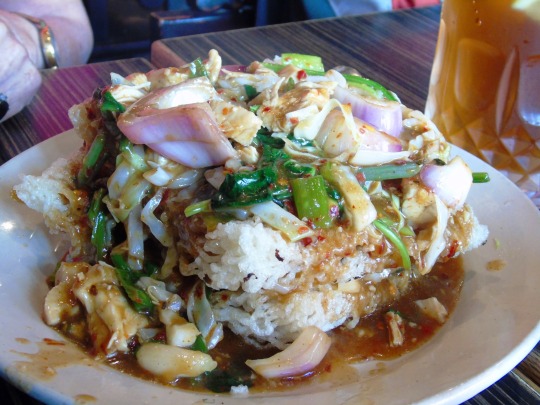
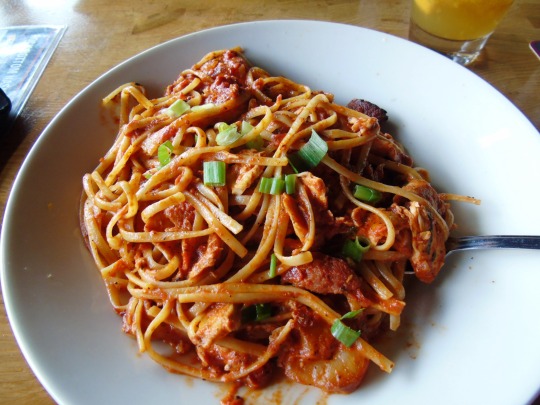

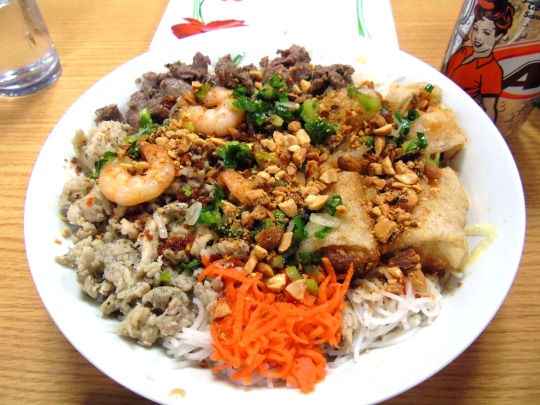
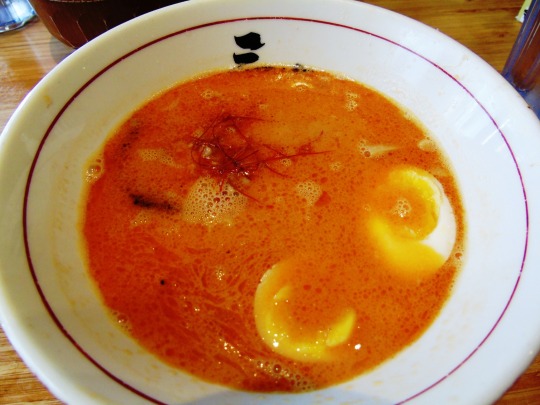


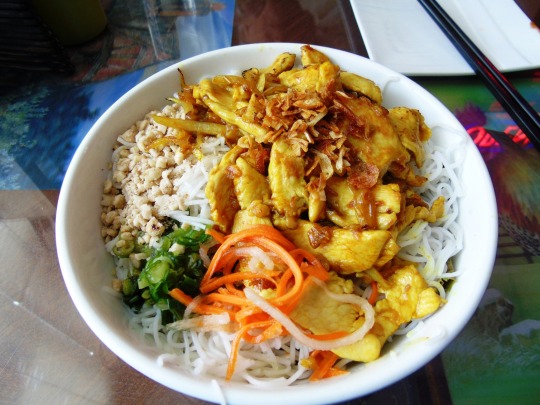

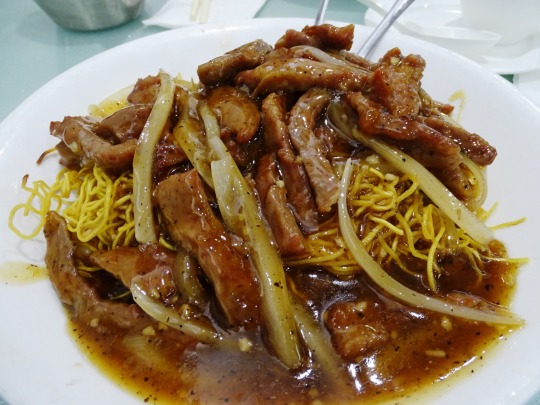

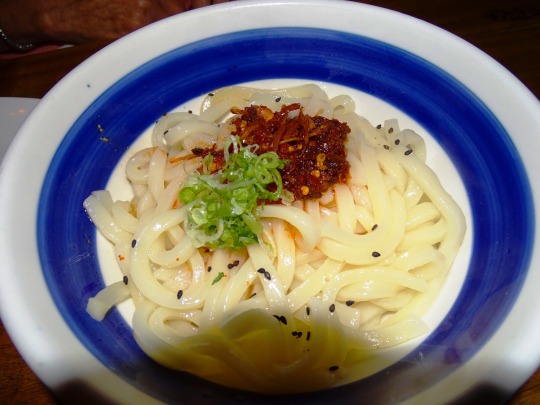

National Noodle Day
Spaghetti, ramen, ziti, egg noodles…most of the best foods are noodles. Try a new kind today, or go out and treat yourself to one of the world’s favorite dishes.
The steam rising from a bowl of noodle soup floats along and dissipates almost like a thing of magic, with rich aromas and the promise of a deliciously warmed belly. In cultures all over the world, noodles have served as a foundation of comfort food, and National Noodle Day celebrates this long history and the place they play in everyone’s life today.
History of National Noodle Day
It is estimated that the origin of noodles dates back as far as two thousand years, or possibly even further. The first mention of noodles in historical records is in a book from the Eastern Han period that dates from between 25 and 220 BC. This unleavened dough has been prepared in many ways, throughout many cultures, using many different ingredients. But one thing remains the same–noodles are almost always delicious!
Noodles–inexpensive, simple, and rather filling–has been a mainstay of the working class for many years. The instant cup of noodles heated quickly in the microwave during a short lunch period. The mainstay of the poor and college-bound, pre-packaged Ramen noodles are often the foundation of a person’s first culinary ventures, as they try to turn the only meal they can afford into something akin to food.
But noodles aren’t only cheap and filling! Now, consider the rich and flavorful bowl of mom’s chicken noodle soup, full of the rich flavors of chicken and carrots, and floating among them are the obligatory egg noodles, which somehow are just the thing to tie this delicious bowl of nutrition together.
For anyone who was born into Italian family, chances are they’ve experienced every kind of noodle the mind can imagine and a few to boot! Rigatoni noodles, spaghetti noodles served with a rich red sauce exploding with flavor, Asian Rice Noodles, or even Fettuccine noodles coated in a thick heavy Alfredo sauce interspersed with bits of chicken.
Noodles have been with mankind in nearly every culture out of history, and National Noodle Day reminds us that this basic and staple food is still the best way to fill a hungry belly at the end of the day.
How to Celebrate National Noodle Day
National Noodle Day can be loads of fun! Making noodles, eating noodles, and enjoying noodles with friends. Try these ideas for spending National Noodle Day:
Go Out for Noodles
Whether at a fast food joint or a sit-down restaurant, noodles are fairly easy to come by in a variety of restaurants.
Noodles and Company, in the United States, is a fast-casual dining place that focuses each of its dishes all around the noodle. Their noodles are all made by hand, and their menu ranges from standards like Macaroni & Cheese and Spaghetti & Meatballs to more unique offerings such as Alfredo MontAmore with Parmesan Crusted Chicken or Grilled Orange Chicken Lo Mein. They also offer gluten-free and vegetarian options for those with certain dietary needs.
It’s a noodle lover’s dream come true!
Get Clever with Ramen Noodles
Those little rectangular packets of dried noodles with a smaller pack of flavorings inside can be used for more than just making some soup! As it turns out, they’re extremely useful to have around the kitchen for a variety of needs. Try out these ways to use those ramen noodles:
Make “Breadcrumbs”. The hard noodles can be crushed up into tiny granules (with a bit of the seasoning packet included). These work well as a substitute for recipes that call for breadcrumbs, such as schnitzel or meatballs.
Use as a Dessert Topping. This might be surprising but those crispy noodles, when cooked with cinnamon and sugar and then fried, offer a delightful chopped topping that can replace nuts on ice cream sundaes or other desserts.
Make Burger Buns. The great thing about ramen noodles is that, once cooked, they can be formed into almost any shape desired. Some people like to add a bit of egg, salt and herbs, then shape them into buns and fry them. These can be used for hamburgers or veggie burgers.
Add Zest to Salads. Take that boring salad to the next level by adding the crunch of pizzaz of ramen noodles. Simply crush the dry noodles and toss them into a coleslaw and top with an Asian dressing. Delicious!
Try a New Kind of Noodle
In a world of thousands of varieties of noodles, the best way to celebrate National Noodle Day is by reaching beyond your comfort level and trying something new. If your culinary experience with noodles is limited to Instant Cup a Soup and Spaghetti, it’s time to try something new.
Explore the rice or buckwheat noodles from your local Asian store, or discover exactly what a Manicotti noodle is and what it is used for! You’ll find yourself marveling at the sheer variety of noodles and noodle dishes there are, enough to have a different dish every day for years!
Share Noodles with Others
Celebrating National Noodle Day with the community can be loads of fun. Take a noodle dish to the office to share with coworkers. Or invite a few friends or family members over to enjoy a meal with many courses–all of which include noodles!
Source
#stir-fried noodles with pecan#Pan Fried Noodles#Crispy Rice Noodle Tower#Ramen Noodles#travel#USA#food#original photography#restaurant#Spicy Shanghai Noodles#Rayu Udon#Cajun Pasta#Spicy Tantan Ramen#Tonkotsu Black Ramen#Beef Black Pepper#Canada#Bun Thit Bo#National Noodle Day#vacation#NationalNoodleDay#6 October#pasta
0 notes
Text
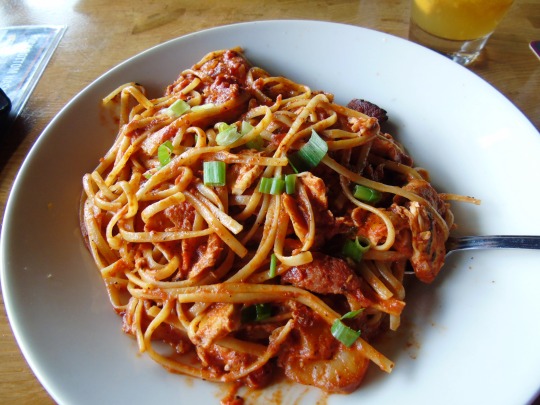
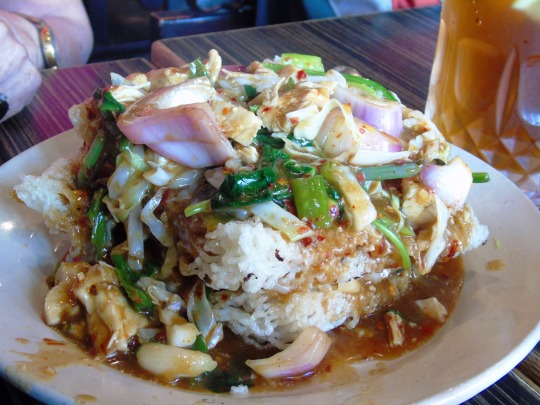
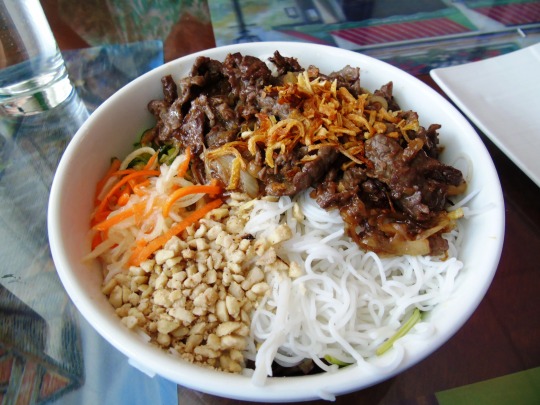
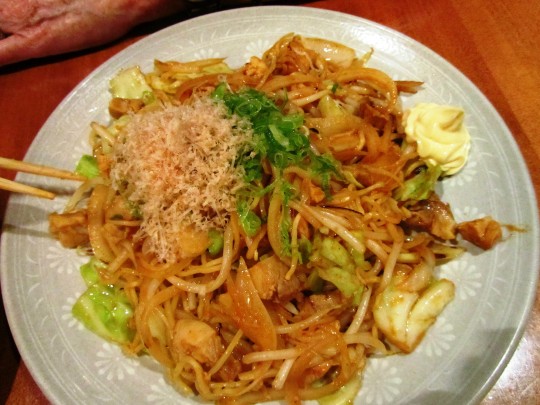
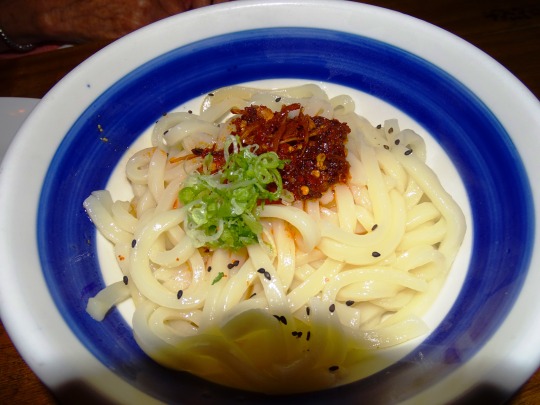
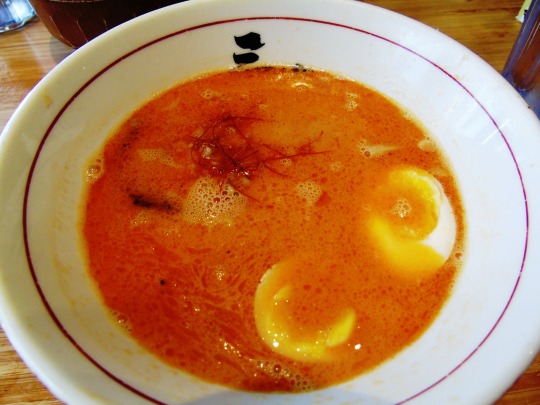
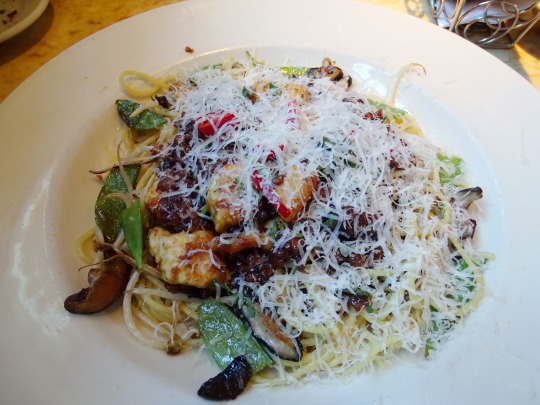
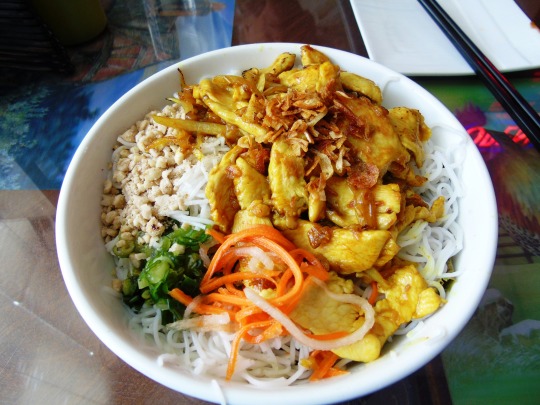
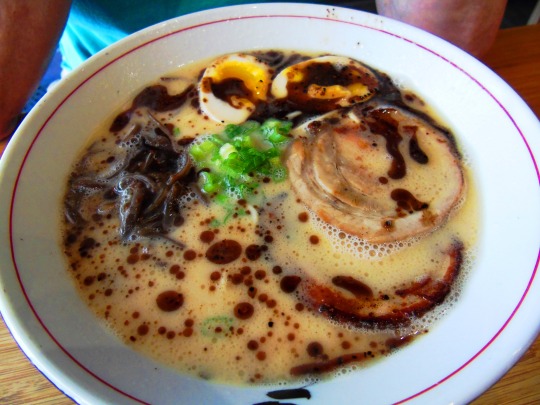
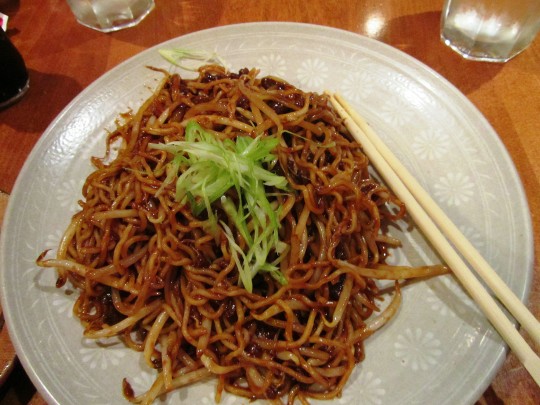
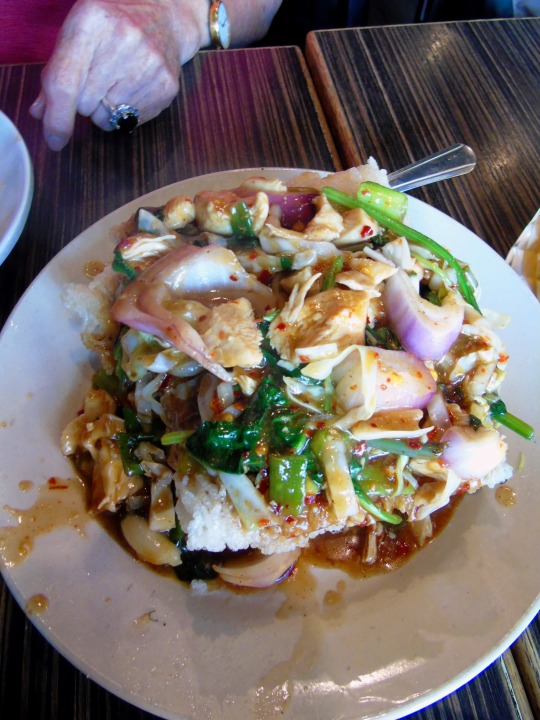
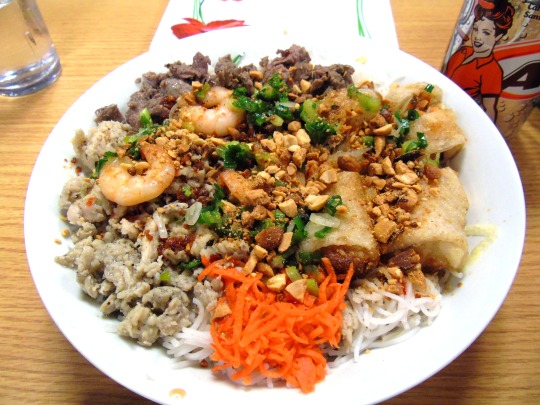
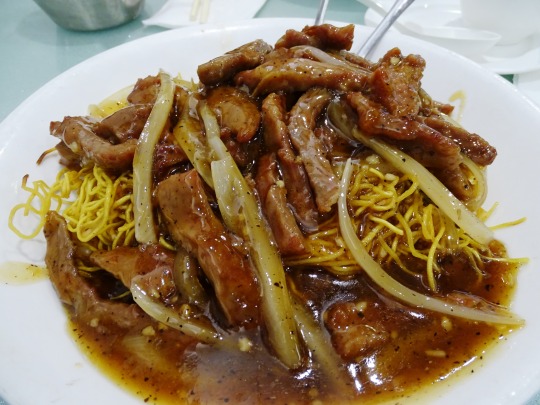
National Spaghetti Day
Savor your favorite Italian dishes from carbonara to meatballs, sign up to a pasta-making class or watch a thrilling Spaghetti Western.
One of the world’s favorite dishes, spaghetti is more than deserving of its own little day. And because it is both simple and delicious, spaghetti is the perfect dish to make to bring out your inner chef, even if you don’t have all that much cooking experience!
The history of National Spaghetti Day
Many people don’t know that the first historical reference to boiled noodles suggests that the Arabs invented the dish thousands of years ago, long before it became a staple of Italian cuisine.
What’s especially remarkable about this is that historical records actually refer to dried noodles being purchased from a street vendor, which means that pasta has been sold in stores since at least the 5th century A.D.! Of course, today we associate pasta with the Italians, who revolutionized the dish and invented a wide variety of pasta shapes.
The first Western pasta was likely long, thin forms made in Sicily around the 12th century; till this day, spaghetti is the most common round-rod type of pasta and in Italian, “spaghetti” means “little lines.” However, the popularity of pasta only spread across the whole country of Italy after the establishment of pasta factories in the 19th century, substantially shortening the time needed for making dishes like spaghetti and enabling the mass production of pasta for the Italian market.
The steady flow of Italian immigrants to the United States brought traditional Italian dishes with it, and spaghetti was offered in restaurants as early as the 19th century. Spaghetti then gained popularity all over the world, with Venezuela, Tunisia and Greece some of the biggest pasta consumers, alongside Italy and the United States. The US, for example, will consume over two and a half million metric tons of pasta over the course of a year, a significant proportion of which will be spaghetti!
National Spaghetti Day Timeline
1154 A.D. Edrisi mentions pasta made in Sicily
In his vitally important work, The Book of Roger, explorer and author Edrisi (or Idrisi), chronicles his observations of a Sicilian town called Trabia. He writes about how the inhabitants make pasta from wheat, shaped into long strands, and export the product for sale in other regions.
13th Century Spaghetti-like noodles arrive with Marco Polo
One story about the origin of spaghetti involves spaghetti-like noodles being brought back from China by explorer Marco Polo. The first versions of this are likely made from rice flour but perhaps evolve into something made from the more available durum wheat grains.
1928 Chef Boyardee’s canned spaghetti hits the market
Named after Italian immigrant and restaurant owner Hector Boiardi, this company develops after locals want to buy this delicious sauce to take home in cans. The demand eventually catalyzes the convenience foods of canned pasta, including spaghetti, ravioli and other noodles.
1953 First “National Spaghetti Day” is promoted in Washington, USA
In an effort to get people to come to the restaurant, Horton’s of Walla Walla, Washington, ran promotions declaring every Thursday as “National Spaghetti Day”.
1969 The first Old Spaghetti Factory opens
Run by Guss and Sally Dussin, this quintessential family restaurant launches in Portland, Oregon, USA and features a family favorite recipe for Spaghetti with Mizithra Cheese and Browned Butter.
How to make spaghetti
Spaghetti is made from milled wheat (flour) and water and comes in both fresh and dried forms. Traditionally it’s made using durum wheat that’s roughly ground – the flour produced is ideal for making pasta as its coarseness helps bind it to the sauce. Nowadays there are of course a variety of other types, including wholewheat and gluten free options.
Once prepared, the dough can be turned into the classic spaghetti shape either by hand or by a machine, whether a pasta machine in a home kitchen or an extruder in a factory. Whatever the method for forming the pasta, it’s important to dry it carefully to avoid any spaghetti strings getting stuck together!
Although wholewheat is generally considered healthier than refined spaghetti, there are benefits to both types. While refined spaghetti is likely to contain higher amounts of iron and B vitamins, wholewheat contains more fiber and micronutrients along with fewer calories. Whichever type you prefer, spaghetti is rich in carbs and so is best enjoyed as part of a healthy diet – a nutritious sauce is therefore a great addition when eating spaghetti.
How to cook spaghetti
Although a relatively easy food to cook, there are still some tricks worth knowing for the perfect result. It’s a good idea to cook spaghetti al dente – firm but not crunchy! Chefs have various tips for preventing the pasta from sticking together, including using a pan that’s big enough, mixing some oil in with the water and ensuring that the water is boiling before adding the spaghetti (as the bubbling helps keep the strands moving). Seasoning the water before cooking will also ensure your spaghetti is nice and flavorsome.
Another top tip is to keep hold of what chefs refer to as ‘liquid gold’ – the starchy water produced by cooking pasta. While many of us simply drain this away once our spaghetti is ready, it can actually help emulsify and thicken the sauce. With spaghetti you can simply remove the pasta from the pan using tongs rather than a colander to save and make the most of this precious liquid.
When it comes to the sauce, there are many well-known spaghetti dishes, for example Bolognese and carbonara. Spaghetti and meatballs is another particularly popular option. Whatever your preferred sauce, be sure to season well with herbs such as basil, rosemary and oregano.
Spaghetti in popular culture
With their distinctive soundtracks, extreme violence and socio-political bent, Spaghetti Westerns such as Django, A Fistful of Dollars and The Good, the Bad and the Ugly became popular in Hollywood during the 1960s. Although these films had no relation to the food itself, the name of this movie sub-genre does highlight how synonymous spaghetti had become with the country of Italy, with Spaghetti Westerns also called Italian Westerns due to them stemming from Italian filmmakers.
One of the most iconic instances of this delicious dish in popular culture has to be the famous spaghetti eating scene in Disney’s Lady and the Tramp, where the two pooches, serenaded by the restaurant’s chefs, accidentally eat the same piece of spaghetti. Tramp even gives Lady the last meatball – if that’s not true love then what is!
With spaghetti so readily available in food shops, it’s no wonder that many of us know relatively little about its production process. Back in 1957 the British Broadcasting Company (BBC) played on viewers’ lack of knowledge to orchestrate what’s now known as the ‘spaghetti-tree hoax’, a fake segment broadcast on April Fools’ Day that showed a Swiss family collecting dangling strands of spaghetti from trees. Suffice to say many were fooled by the reputable broadcaster’s joke, with the BBC receiving a large number of phone calls from confounded viewers.
Step up your spaghetti game with these pasta tips!
How to celebrate National Spaghetti Day
Above all else, National Spaghetti Day is the perfect excuse for indulging in your favorite spaghetti dishes. Even if you don’t spend much time in the kitchen, a hearty bowl of spaghetti topped with a simple tomato sauce or a store-bought alternative should do the job nicely. The more adventurous cooks out there will be pleased to know that many cooking websites publish new recipes to celebrate National Spaghetti Day, increasingly with gluten or dairy free options. And if you’re a budding Michelin star chef, why not try making spaghetti from scratch? A pasta maker is a plus, but you can also make your spaghetti strands using a rolling pin and a knife. Spiralizing vegetables is another way to produce a non-typical variant of this beloved classic.
If home-made spaghetti doesn’t take your fancy, then you can always head over to your local Italian restaurant. Lots of restaurants will put on special deals and discounts to celebrate National Spaghetti Day, so make sure to check out what’s on offer near you. Just beware that you may need to book in advance as it’s likely to be a popular day! And once you’re suitably full, you can always crash out on the sofa and enjoy a good Spaghetti Western.
Spaghetti’s versatility is one of its many charms, so why restrict yourself to spaghetti in its long, thin form? Nowadays spaghetti hoops are very popular, proving to be a much less messy option and so especially appealing to parents of young children! Spaghetti sandwiches are big in countries such as Japan and Australia, and Filipino spaghetti is well-loved in the Philippines with its sweetened sauce. Continuing on the sweet theme, you could even try spaghettieis, an ice cream dish designed to look like spaghetti that originated in Germany.
Source
#Cajun Pasta#noodles#Spicy Shanghai Noodles#restaurant#food#travel#original photography#Crispy Rice Noodle Tower#Spicy Tantan Ramen#USA#Canada#Tonkotsu Black Ramen#Bun Ga Xao Xao#Bun Thit Bo#Beef Black Pepper#Rayu Udon#Ramen Noodle#National Spaghetti Day#4 January#NationalSpaghettiDay#Asian food#vacation
0 notes
Text
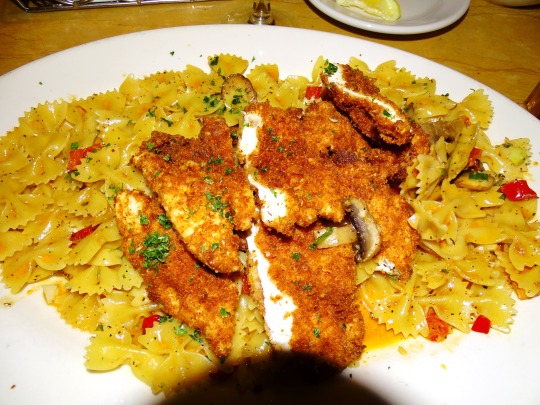
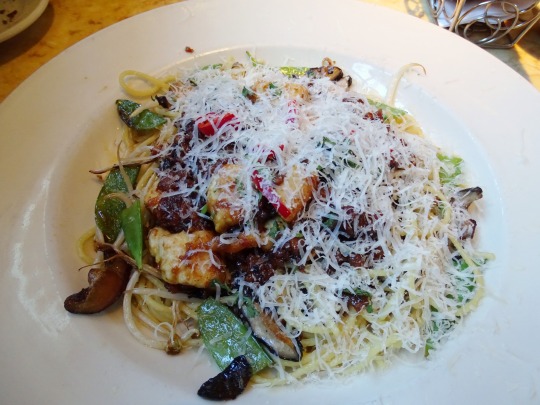
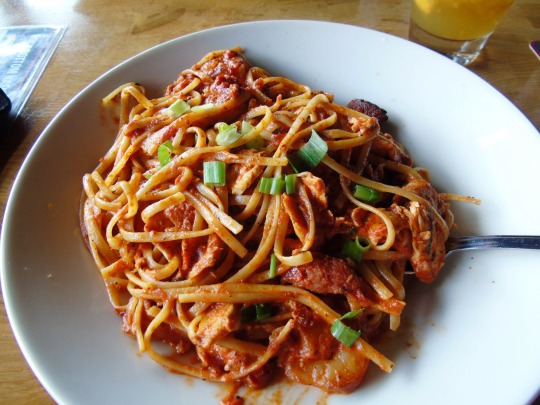
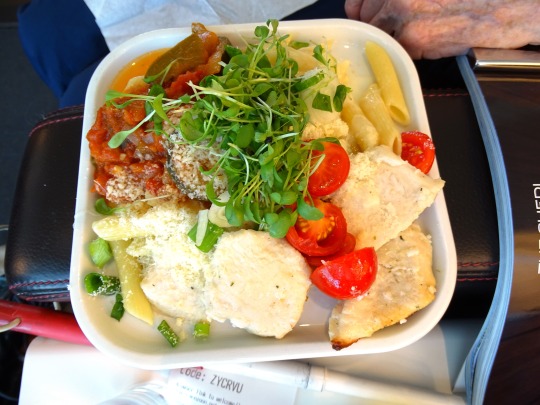
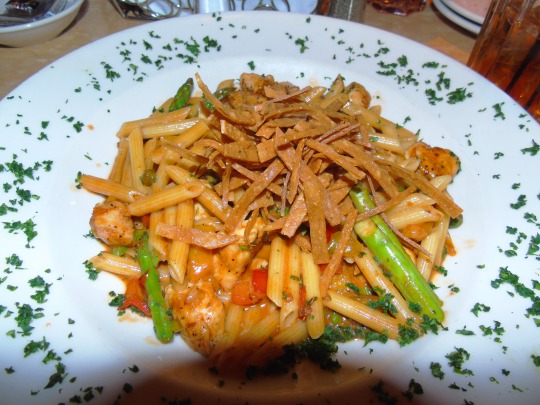
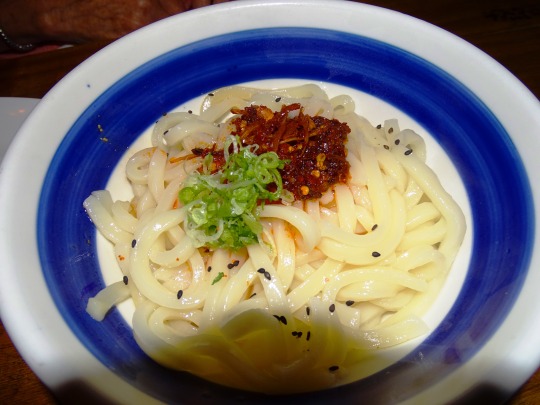
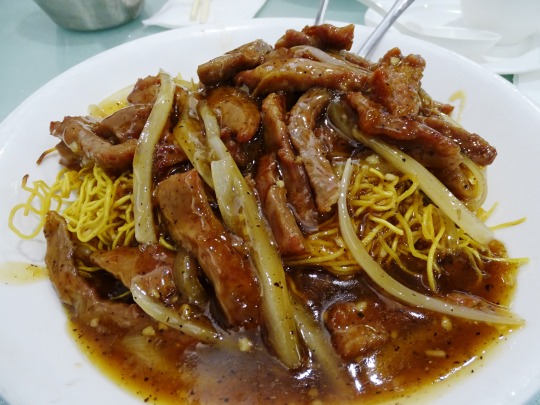

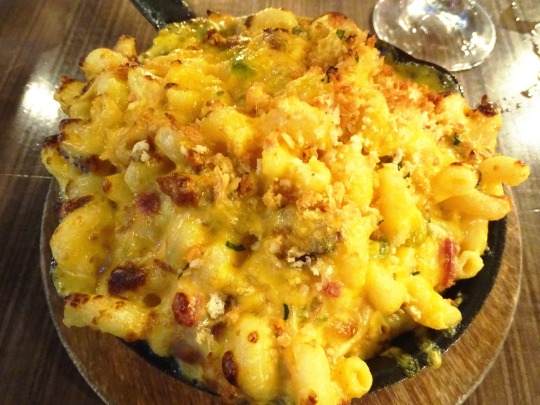
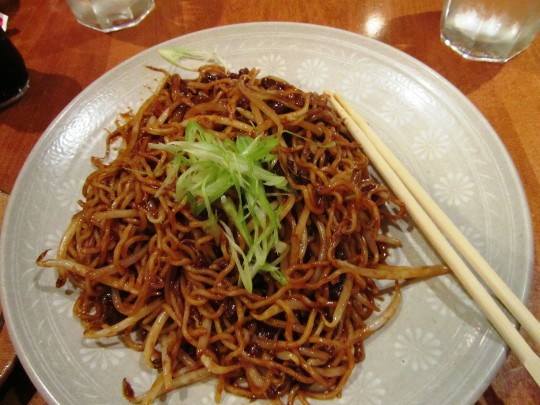

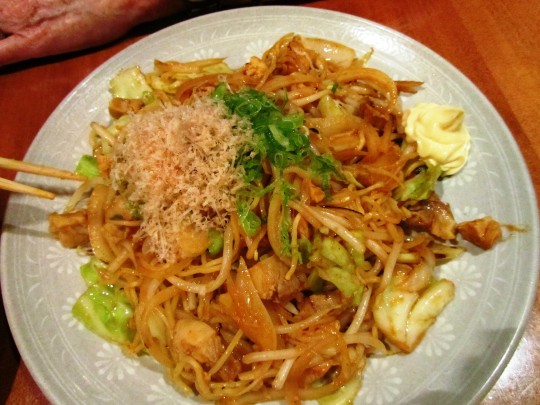
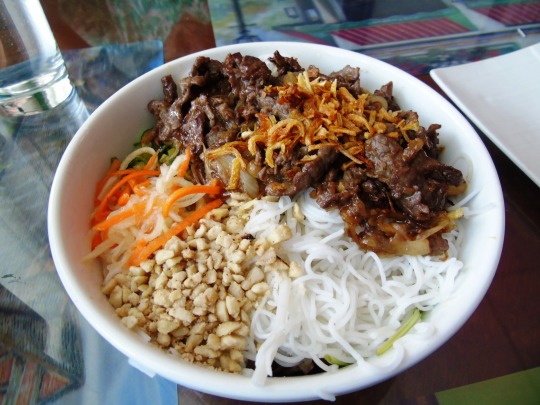
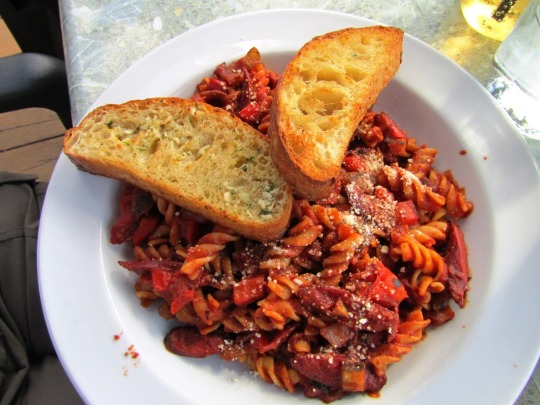
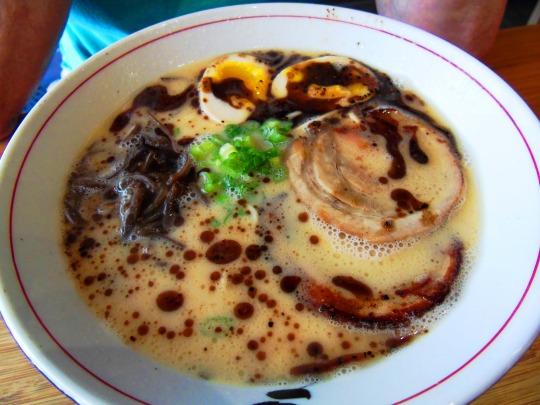
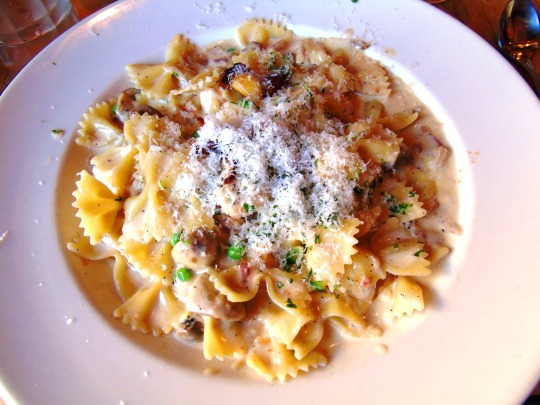
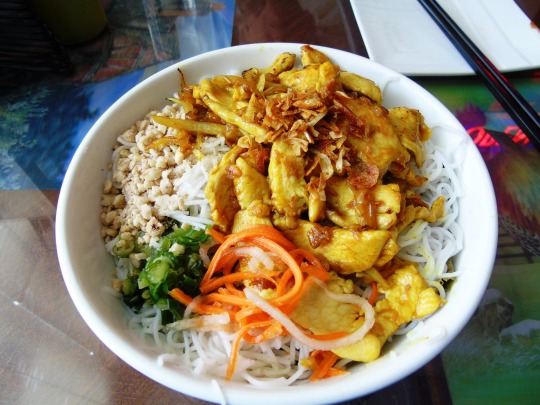
World Pasta Day
Life is too short, and I’m Italian. I’d much rather eat pasta and drink wine than be a size 0. - Sophia Bush
Picture this….a warm steaming pile of spaghetti in a rich red sauce, littered with seasoned sausage, black olives, and mushrooms served with crusty garlic bread on the side.
Or, perhaps the idea of a rich Chicken Fettuccine in a creamy garlic white sauce is more likely to be what blows your mind.
Pasta comes in over 600 shapes known to mankind, and their names are usually Italian words that are delightfully descriptive of their shapes. Spaghetti (‘cord’), vermicelli (‘little worms’), rotini (‘spirals’), fusilli (‘spindles’), tortellini (‘little cakes’), linguini (‘little tongues’), conchiglie (‘shells’), fettuccine (‘small ribbons’), penne (‘quills’) and capellini (‘fine hairs’) are the savory little goodies that are essential to any pantry.
While Italian food made it famous, that was actually only a gateway to pasta. Chinese Chow Mein and German Spaetzle are just a couple of the ways the world has taken pasta and fallen in love with it all over again.
And World Pasta Day is the perfect time to celebrate this love!
History of World Pasta Day
World Pasta Day was brought into existence as part of the World Pasta Congress on the 25th of October in 1995. Experts from all over the world came together to discuss the glories of the noodle, with particular emphasis on the importance of spreading knowledge of the world’s panorama of pasta. This organization uses World Pasta Day to promote the eating of pasta, along with its cultural and culinary importance.
The World Pasta Congress engages in everything from encouraging consumers to try new pasta to providing important information to institutions and promotions of this increasingly popular food. Every country is encouraged to celebrate the day in its own way while sharing the logo of the official organization and participating in the global strategy of World Pasta Day.
How to Celebrate World Pasta Day
Food days are simple and easy to celebrate, but they can come with a variety of layers as well. Look to these ideas for inspiration, then create your own ways to celebrate World Pasta Day:
Eat Pasta–and Lots of It!
One of the best ways to celebrate World Pasta Day is by preparing a favorite dish and enjoying the delicious flavors and textures that come along with that noodly goodness. There’s no better way to renew a deep appreciation for it than by wolfing down this healthy and semi-nutritious food.
Most people don’t enjoy eating pasta without any sauce, but the options for what to put on it range from the simple to the complex. Try it with a little melted butter and garlic. Cheese sauce (such as alfredo), tomato sauce (bolognese or marinara), and pesto are traditional options. But some people like to get super creative with unique flavors like butternut squash carbonara, avocado and mango sauce, or herbed white wine sauce. The options are virtually endless!
Host a World Pasta Day Party
Folks who are feeling like they want to share the day can go all out and host a World Pasta day party. This is a great way for everyone to come together to share their favorite pasta dish, or exchange recipe ideas with other guests to help the love of the noodle spread. Be sure to be prepared for one momentous night of rich and creamy carbohydrate overload. It may be that naps will be mandatory, but stomachs will most definitely be full!
For the truly daring, enhance the party by having participants only bring pasta dishes that they have never tried before. Try new noodle types, or even making your own pasta. Experiment with sauces and flavors that may be outside of the normal palate.
Try Making Homemade Pasta
Some people find it a little difficult and time-consuming, but the benefits of making fresh, homemade pasta are absolutely worth it! The easiest way to make it is by using an at-home pasta maker, which can be a little bulky to store in the kitchen but turns pasta-making into a breeze.
The recipe for pasta is fairly simple, using just a few ingredients. Basic pasta will consist of semolina wheat flour, eggs, olive oil and a bit of sea salt. Some pasta recipes don’t include eggs, while others might have a more unique flavor, such as spinach, sun-dried tomato, saffron, roasted red pepper and more.
Those who don’t have a pasta maker can certainly make it by hand, as it was done for hundreds of years in every home in Italy! It takes a little more work in the rolling, but it’s a fun, adventurous project in the kitchen. A food processor and stand mixer will help this process immensely, and a pasta drying rack is also a useful tool.
Try Something New (Or Very Old) In Pasta
This is the ideal day to get creative and experiment with different flavors and dishes. For instance, many people don’t know that Spaetzle was traditionally served with a sour sauce/gravy for Sauerbraten. It’s amazing! Imagine what else could unfold into the culinary world for those who will take World Pasta Day to broaden their horizons!
Attend World Pasta Day Events
All over the world, in various communities, people are celebrating pasta on this day. Get online or check out a local announcements board to find out which events might be happening in the area. For instance, some folks might have a pasta cook-off, while others might create a pasta festival. Those who can’t find a World Pasta Day event in their local area could certainly consider creating one! After all, it’s for the love of pasta.
Source
#World Pasta Day#WorldPastaDay#25 October#food#USA#travel#vacation#Spicy Chicken Chipotle Pasta#Louisiana Chicken Pasta#Cajun Pasta#Rayu Udon#Beef Black Pepper#Canada#restaurant#Crispy Rice Noodle Tower#Spicy Bison Peperoni & Roast Vegetables Pasta#Farfalle with Chicken and Roasted Garlic#Tonkotsu Black Ramen#Bun Thit Bo#Pan Fried Noodles 'Udon'#Bun Ga Xao Xao
1 note
·
View note
Photo
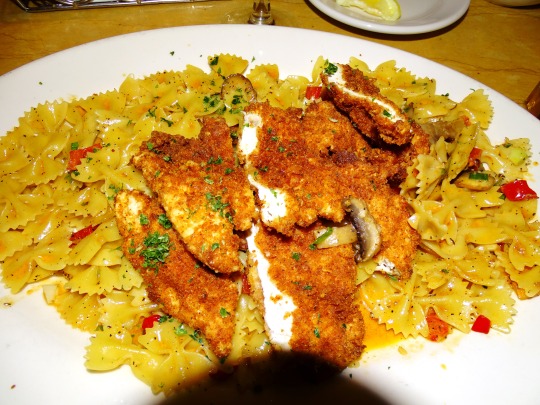
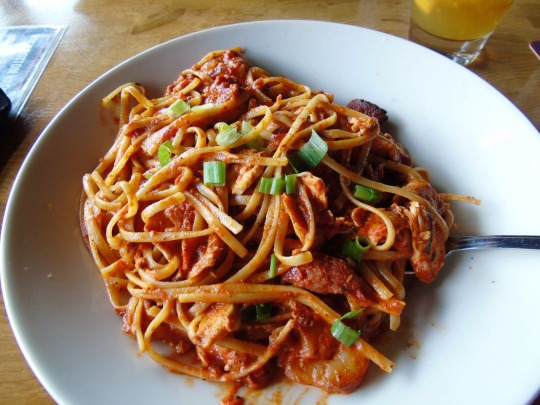
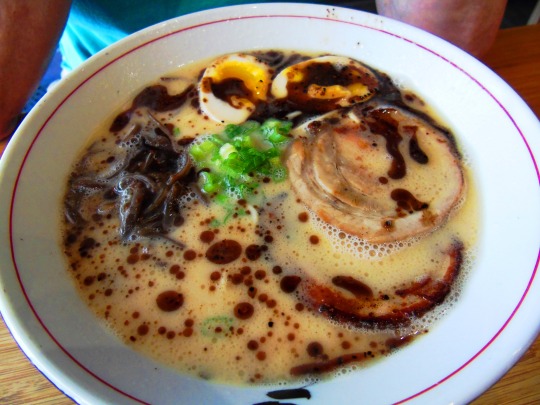

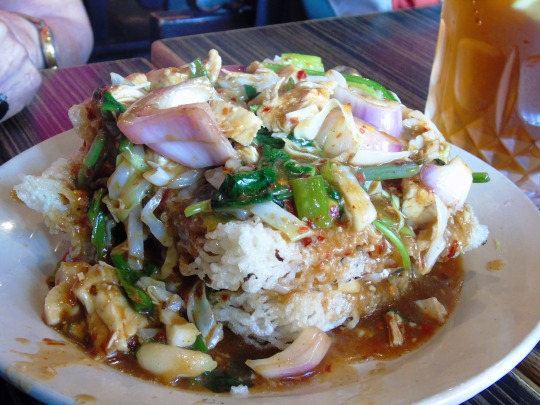
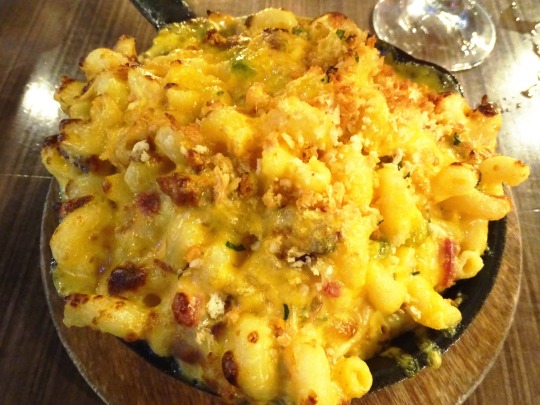
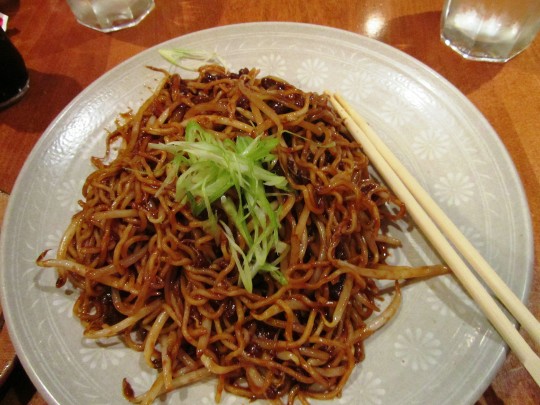
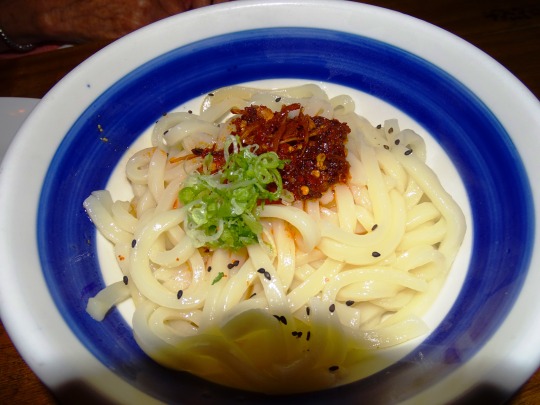
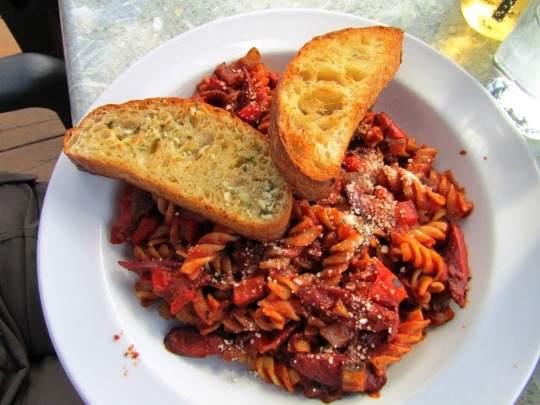
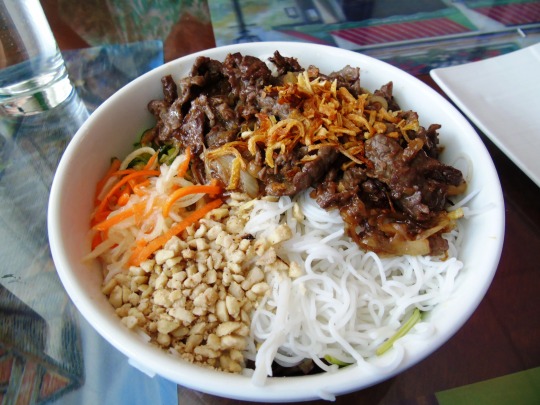
National Pasta Day
Pasta is one of the world's most favorite foods! Spaghetti, lasagna, rotini, tortellini - there are over 600 known pasta shapes.
It's delicious, it's nutritious, it's versatile. It can be enjoyed as a main course, or as a side dish. Top it with your favorite sauce and Mangiamo - let's eat!
Myth vs Fact
Pasta's origins are ancient. Contrary to popular belief however, Marco Polo did not discover pasta in Asia and bring it to Italy. In fact, in 1279 a.d., a will drafted by Ponzio Bastone was found bequething a storage bin of macceroni when Marco Polo was still in the Far East.
Early Romans used a very simple flour and water dough. Pasta is the Italian word for dough.
Thomas Jefferson introduced pasta to the Americas after first tasting it in Naples, Italy. He was the American Ambassador to France at the time. In 1789, he brought the first pasta machine, along with crates of macaroni, back to the United States.
Pasta became a common North American food in the late 19th century with the surge in Italian immigration.
Fresh vs Dry
Fresh pasta (pasta fresca) is not necessarily better than dried pasta (pasta secce). It just that it's made differently and it tastes different. Dry pastas are made with just wheat and water. Fresh pastas add egg to the dough.
It is the shape of the noodle that gives pasta its name.
Some examples:
Spaghetti - cord Linguini - little tongues
Vermicelli - little worms Conchiglie - shells
Rotini - spirals Fettucine - small ribbons
Ravioli - little turnips Capellini - fine hairs
Fusilli - little spindles Cannelloni - tubes
Tortellini - little cakes Penne - quills
Rigatoni - short, wide fluted tubes
Lasagna - broad, sometimes ruffled, ribbons of pasta
What's In the Pantry?
What's in your pantry? Homemade pasta sauce tastes great with pasta and is limited only by the ingredients you have on hand. Follow a recipe or use your imagination. It's that simple!
Some basics include olive oil, garlic, tomato and hot pepper flakes. Combine for a quick and easy sauce.
Keep fresh herbs (basil, parsley) on hand to add flavor.
Pair sauce with vegetables or beans.
Add meat and simmer for a thicker, richer flavor.
Pasta meal ingredients
Share the Table
There's something special about a shared family meal. Whether it's simple spaghetti and meatballs, or pasta risotto with shrimp and scallops, it's a time to relax, re-energize, refuel and reconnect after a busy day on the go.
Source
#Louisiana Chicken Pasta#National Pasta Day#NationalPastaDay#17 October#food#original photography#travel#vacation#USA#restaurant#Spicy Chicken Chipotle Pasta#Cajun Pasta#Crispy Rice Noodle Tower#Rayu Udon#Canada#Mac 'n' Cheese#Bun Thit Bo#Spicy Bison Peperoni & Roast Vegetables Pasta#Ramen Noodle#Tonkotsu Black Ramen
9 notes
·
View notes
Photo
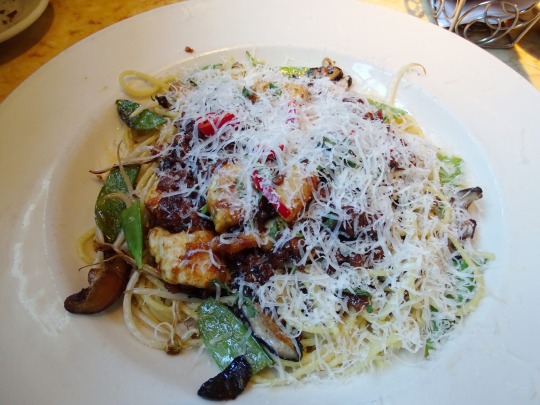

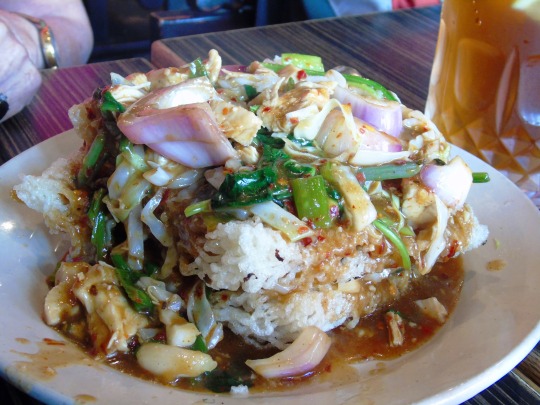
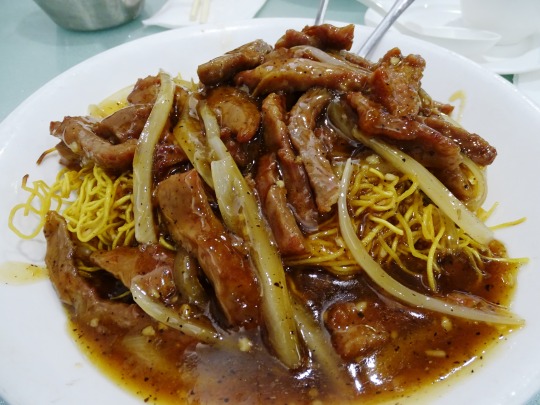
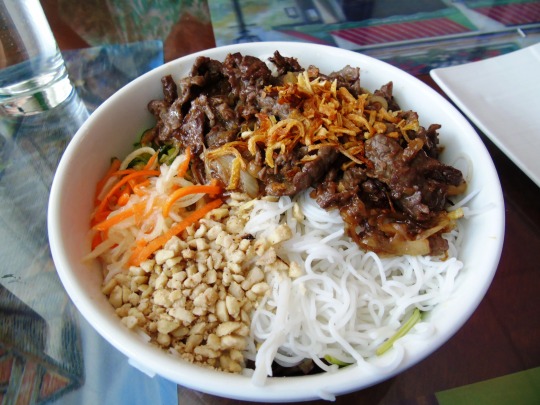

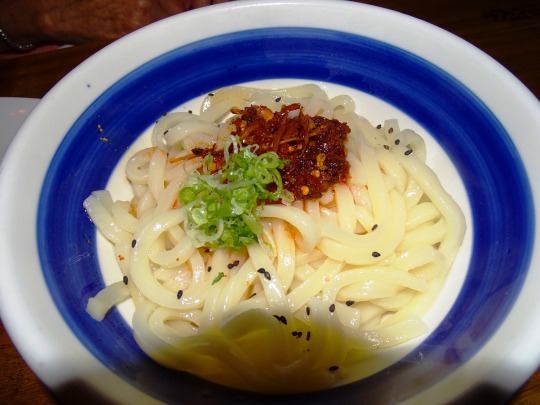
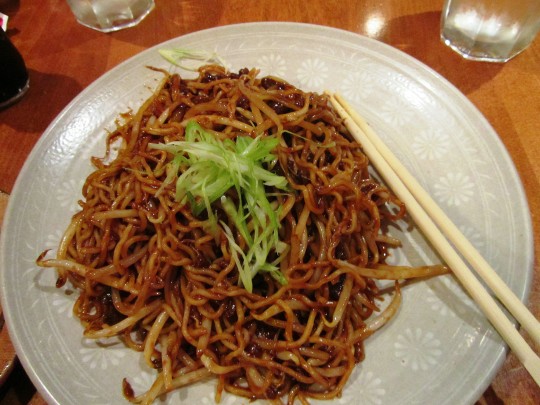
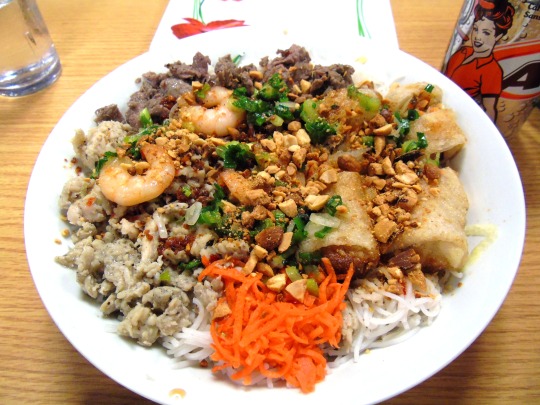
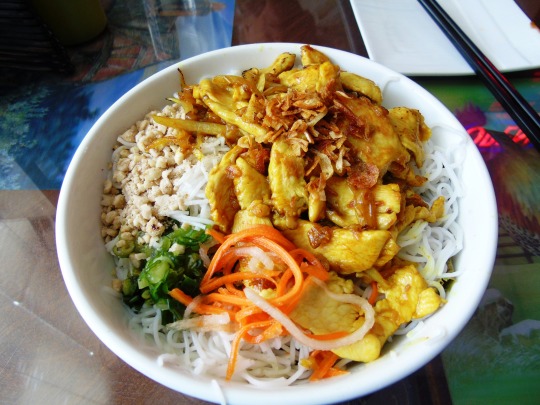
National Noodle Day
The steam rising from a bowl of noodle soup floats along and dissipates almost like a thing of magic, with rich aromas and the promise of a deliciously warmed belly. In cultures all over the world, noodles have served as a foundation of comfort food, and Noodle Day celebrates this long history and the place they play in everyone’s life today.
History of Noodle Day
It is estimated that the origin of noodles dates back as far as two thousand years, or possibly even further. The first mention of noodles in historical records is in a book from the Eastern Han period that dates from between 25 and 220 BC. This unleavened dough has been prepared in many ways, throughout many cultures, using many different ingredients. But one thing remains the same–noodles are almost always delicious!
Noodles–inexpensive, simple, and rather filling–has been a mainstay of the working class for many years. The instant cup of noodles heated quickly in the microwave during a short lunch period. The mainstay of the poor and college-bound, pre-packaged Ramen noodles are often the foundation of a person’s first culinary ventures, as they try to turn the only meal they can afford into something akin to food.
But noodles aren’t only cheap and filling! Now, consider the rich and flavorful bowl of mom’s chicken noodle soup, full of the rich flavors of chicken and carrots, and floating among them are the obligatory egg noodles, which somehow are just the thing to tie this delicious bowl of nutrition together.
For anyone who was born into Italian family, chances are they’ve experienced every kind of noodle the mind can imagine and a few to boot! Rigatoni noodles, spaghetti noodles served with a rich red sauce exploding with flavor, Asian Rice Noodles, or even Fettuccine noodles coated in a thick heavy Alfredo sauce interspersed with bits of chicken.
Noodles have been with mankind in nearly every culture out of history, and Noodle Day reminds us that this basic and staple food is still the best way to fill a hungry belly at the end of the day.
How to Celebrate Noodle Day
Noodle Day can be loads of fun! Making noodles, eating noodles, and enjoying noodles with friends. Try these ideas for spending Noodle Day:
Go Out for Noodles
Whether at a fast food joint or a sit-down restaurant, noodles are fairly easy to come by in a variety of restaurants.
Noodles and Company, in the United States, is a fast-casual dining place that focuses each of its dishes all around the noodle. Their noodles are all made by hand, and their menu ranges from standards like Macaroni & Cheese and Spaghetti & Meatballs to more unique offerings such as Alfredo MontAmore with Parmesan Crusted Chicken or Grilled Orange Chicken Lo Mein. They also offer gluten-free and vegetarian options for those with certain dietary needs.
It’s a noodle lover’s dream come true!
Get Clever with Ramen Noodles
Those little rectangular packets of dried noodles with a smaller pack of flavorings inside can be used for more than just making some soup! As it turns out, they’re extremely useful to have around the kitchen for a variety of needs. Try out these ways to use those ramen noodles:
Make “Breadcrumbs”. The hard noodles can be crushed up into tiny granules (with a bit of the seasoning packet included). These work well as a substitute for recipes that call for breadcrumbs, such as schnitzel or meatballs.
Use as a Dessert Topping. This might be surprising but those crispy noodles, when cooked with cinnamon and sugar and then fried, offer a delightful chopped topping that can replace nuts on ice cream sundaes or other desserts.
Make Burger Buns. The great thing about ramen noodles is that, once cooked, they can be formed into almost any shape desired. Some people like to add a bit of egg, salt and herbs, then shape them into buns and fry them. These can be used for hamburgers or veggie burgers.
Add Zest to Salads. Take that boring salad to the next level by adding the crunch of pizzaz of ramen noodles. Simply crush the dry noodles and toss them into a coleslaw and top with an Asian dressing. Delicious!
Try a New Kind of Noodle
In a world of thousands of varieties of noodles, the best way to celebrate Noodle Day is by reaching beyond your comfort level and trying something new. If your culinary experience with noodles is limited to Instant Cup a Soup and Spaghetti, it’s time to try something new.
Explore the rice or buckwheat noodles from your local Asian store, or discover exactly what a Manicotti noodle is and what it is used for! You’ll find yourself marveling at the sheer variety of noodles and noodle dishes there are, enough to have a different dish every day for years!
Share Noodles with Others
Celebrating Noodle Day with the community can be loads of fun. Take a noodle dish to the office to share with coworkers. Or invite a few friends or family members over to enjoy a meal with many courses–all of which include noodles!
Source
#Crispy Rice Noodle Tower#Spicy Shanghai Noodles#pasta#food#restaurant#National Noodle Day#NationalNoodleDay#Cajun Pasta#Beef Black Pepper#Canada#USA#travel#summer vacation#6 October#Bun Thit Bo#Tonkotsu Black Ramen#Ramen Noodle#Rayu Udon#Bun Ga Xao Xao
7 notes
·
View notes
Photo

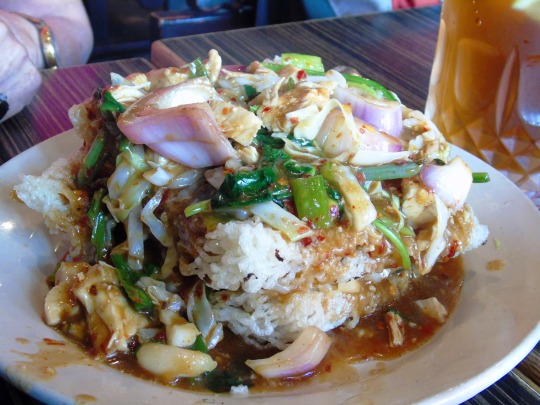
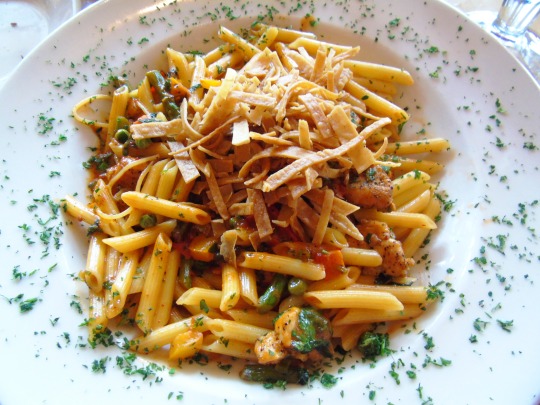
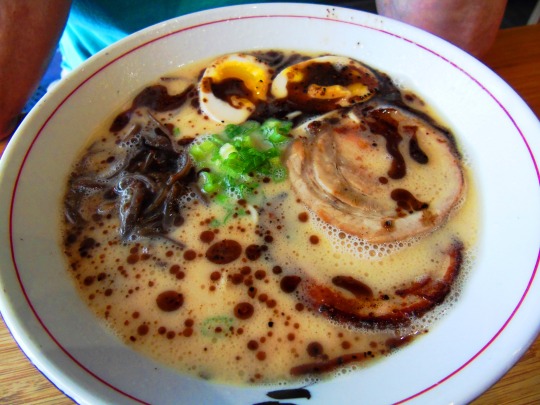
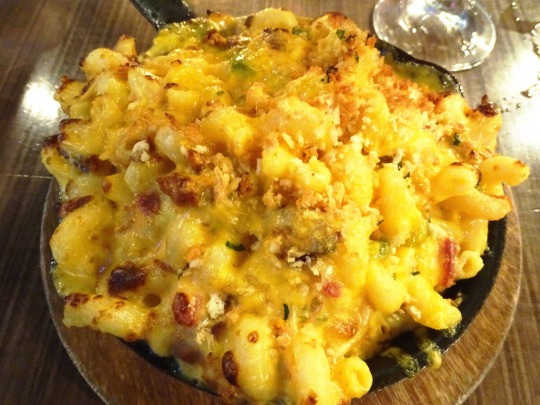
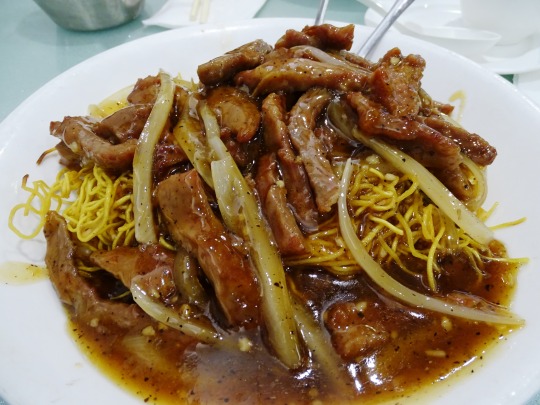
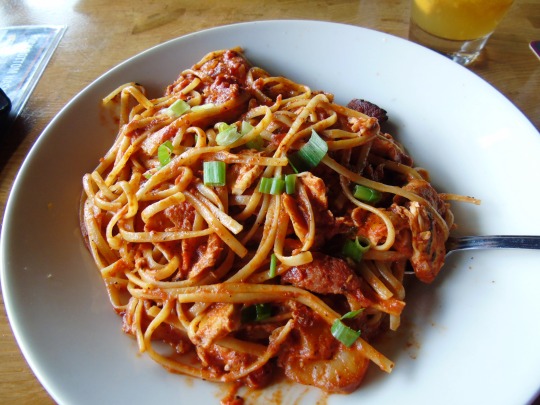
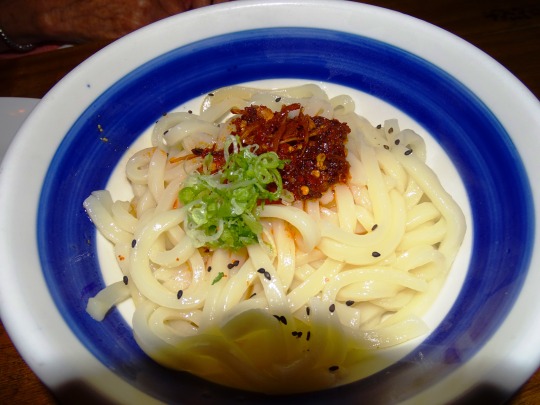
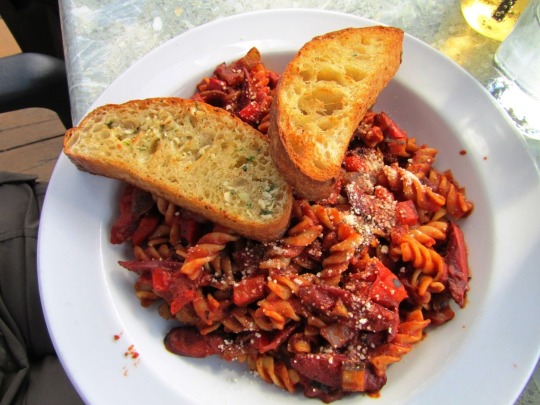
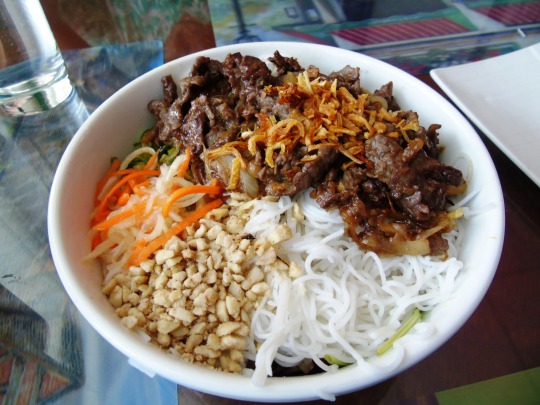
World Pasta Day
Life is too short, and I’m Italian. I’d much rather eat pasta and drink wine than be a size 0. - Sophia Bush
Picture this….a warm steaming pile of spaghetti in a rich red sauce, littered with seasoned sausage, black olives, and mushrooms served with crusty garlic bread on the side.
Or, perhaps the idea of a rich Chicken Fettuccine in a creamy garlic white sauce is more likely to be what blows your mind.
Pasta comes in over 600 shapes known to mankind, and their names are usually Italian words that are delightfully descriptive of their shapes. Spaghetti (‘cord’), vermicelli (‘little worms’), rotini (‘spirals’), fusilli (‘spindles’), tortellini (‘little cakes’), linguini (‘little tongues’), conchiglie (‘shells’), fettuccine (‘small ribbons’), penne (‘quills’) and capellini (‘fine hairs’) are the savory little goodies that are essential to any pantry.
While Italian food made it famous, that was actually only a gateway to pasta. Chinese Chow Mein and German Spaetzle are just a couple of the ways the world has taken pasta and fallen in love with it all over again.
And World Pasta Day is the perfect time to celebrate this love!
History of World Pasta Day
World Pasta Day was brought into existence as part of the World Pasta Congress on the 25th of October in 1995. Experts from all over the world came together to discuss the glories of the noodle, with particular emphasis on the importance of spreading knowledge of the world’s panorama of pasta. This organization uses World Pasta Day to promote the eating of pasta, along with its cultural and culinary importance.
The World Pasta Congress engages in everything from encouraging consumers to try new pasta to providing important information to institutions and promotions of this increasingly popular food. Every country is encouraged to celebrate the day in its own way while sharing the logo of the official organization and participating in the global strategy of World Pasta Day.
How to Celebrate World Pasta Day
Food days are simple and easy to celebrate, but they can come with a variety of layers as well. Look to these ideas for inspiration, then create your own ways to celebrate World Pasta Day:
Eat Pasta–and Lots of It!
One of the best ways to celebrate World Pasta Day is by preparing a favorite dish and enjoying the delicious flavors and textures that come along with that noodly goodness. There’s no better way to renew a deep appreciation for it than by wolfing down this healthy and semi-nutritious food.
Most people don’t enjoy eating pasta without any sauce, but the options for what to put on it range from the simple to the complex. Try it with a little melted butter and garlic. Cheese sauce (such as alfredo), tomato sauce (bolognese or marinara), and pesto are traditional options. But some people like to get super creative with unique flavors like butternut squash carbonara, avocado and mango sauce, or herbed white wine sauce. The options are virtually endless!
Host a World Pasta Day Party
Folks who are feeling like they want to share the day can go all out and host a World Pasta day party. This is a great way for everyone to come together to share their favorite pasta dish, or exchange recipe ideas with other guests to help the love of the noodle spread. Be sure to be prepared for one momentous night of rich and creamy carbohydrate overload. It may be that naps will be mandatory, but stomachs will most definitely be full!
For the truly daring, enhance the party by having participants only bring pasta dishes that they have never tried before. Try new noodle types, or even making your own pasta. Experiment with sauces and flavors that may be outside of the normal palate.
Try Making Homemade Pasta
Some people find it a little difficult and time-consuming, but the benefits of making fresh, homemade pasta are absolutely worth it! The easiest way to make it is by using an at-home pasta maker, which can be a little bulky to store in the kitchen but turns pasta-making into a breeze.
The recipe for pasta is fairly simple, using just a few ingredients. Basic pasta will consist of semolina wheat flour, eggs, olive oil and a bit of sea salt. Some pasta recipes don’t include eggs, while others might have a more unique flavor, such as spinach, sun-dried tomato, saffron, roasted red pepper and more.
Those who don’t have a pasta maker can certainly make it by hand, as it was done for hundreds of years in every home in Italy! It takes a little more work in the rolling, but it’s a fun, adventurous project in the kitchen. A food processor and stand mixer will help this process immensely, and a pasta drying rack is also a useful tool.
Try Something New (Or Very Old) In Pasta
This is the ideal day to get creative and experiment with different flavors and dishes. For instance, many people don’t know that Spaetzle was traditionally served with a sour sauce/gravy for Sauerbraten. It’s amazing! Imagine what else could unfold into the culinary world for those who will take World Pasta Day to broaden their horizons!
Attend World Pasta Day Events
All over the world, in various communities, people are celebrating pasta on this day. Get online or check out a local announcements board to find out which events might be happening in the area. For instance, some folks might have a pasta cook-off, while others might create a pasta festival. Those who can’t find a World Pasta Day event in their local area could certainly consider creating one! After all, it’s for the love of pasta.
Source
#Louisiana Chicken Pasta#Spicy Chicken Chipotle Pasta#World Pasta Day#USA#WorldPastaDay#restaurant#original photography#25 October#Canada#Cajun Pasta#Mac 'n' Cheese#Crispy Rice Noodle Tower#Rayu Udon#Beef Black Pepper#Tonkotsu Black Ramen#Bun Thit Bo#Spicy Bison Peperoni & Roast Vegetables Pasta
2 notes
·
View notes
Photo
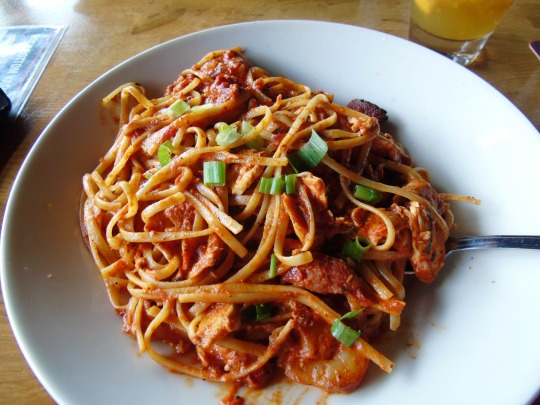
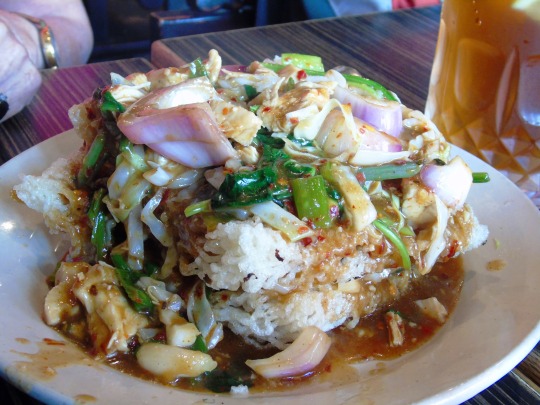
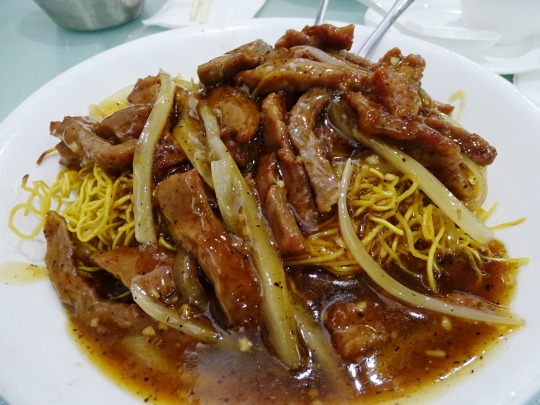
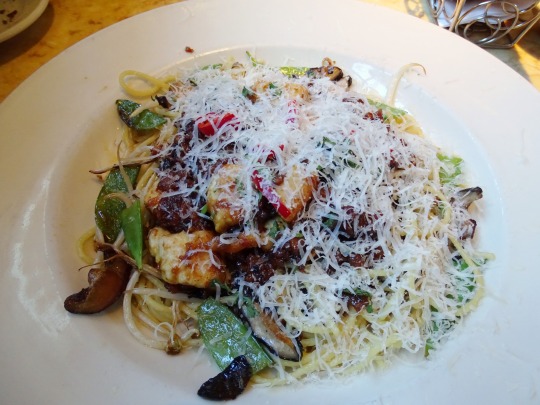
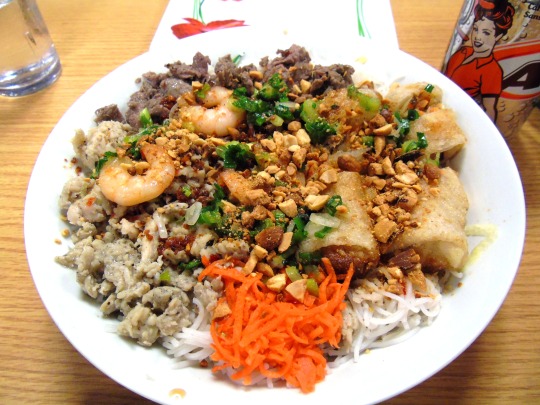
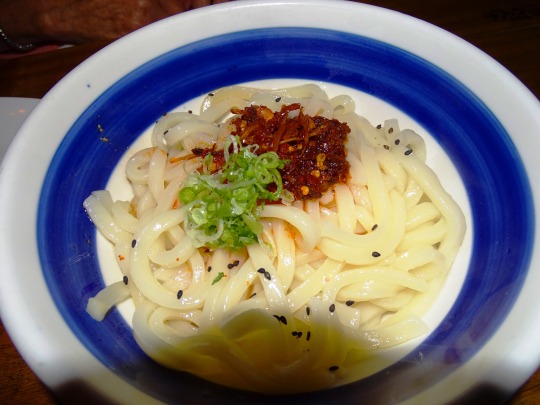
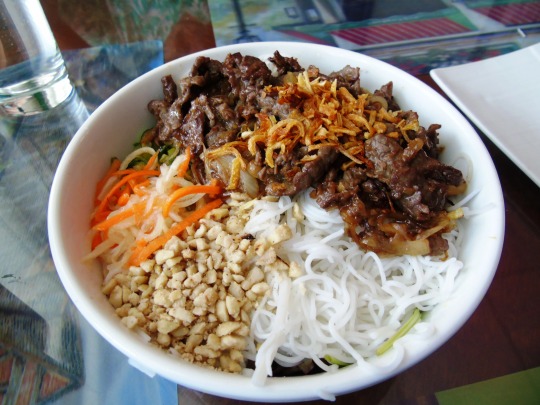
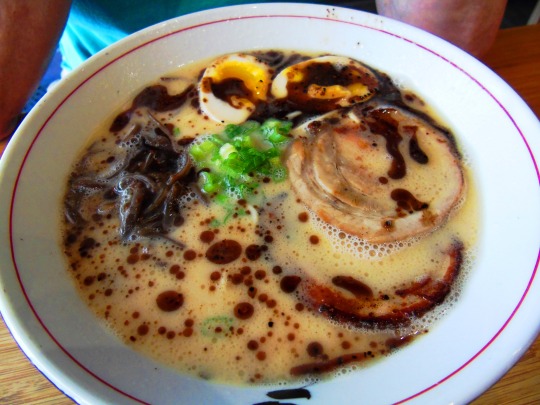

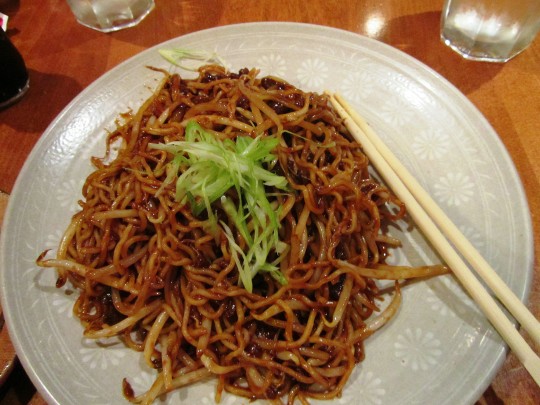
National Spaghetti Day
Spaghetti, a long, cylindrical, and thin pasta made of milled wheat and water, is celebrated today. Its name comes from an Italian word meaning "thin string" or "twine." The first written record of pasta is in the Talmud, which dates to the fifth century CE. It mentions dried pasta that could be cooked by being boiled. A popular theory claims that spaghetti was invented in China and Marco Polo brought it to Venice, but it is more likely that spaghetti was originally created in Sicily more than 500 years before his time. Arabs occupied Sicily in the seventh century CE, and brought a meal called itriyya, which was described as a "dry pasta". This is likely where spaghetti came from. In a geographical survey of Sicily and surrounding regions called the Book of Roger, commissioned by Sicily's monarch King Roger II and published by Muhammad al-Idrisi in 1154, a long strand hard wheat pasta is mentioned. It was manufactured in large quantities in the Sicilian town of Trabia and exported to other regions. This is the first definitive historical record of spaghetti production.
The popularity of spaghetti and pasta was bolstered by the Age of Sail, and because it could be dried. By the sixteenth and seventeenth centuries, spaghetti was a common meal throughout Sicily and Italy. Spaghetti factories established in the nineteenth century further increased its popularity in Italy, by allowing it to be produced on a mass scale. Factories also helped spread its popularity around the Mediterranean. Tomatoes didn't become a staple in Italian cooking until the nineteenth century; tomato-based sauces to go with spaghetti are a more recent creation. In Italy today, spaghetti is often served with tomato sauce, which may contain herbs such as basil and oregano, and olive oil, meat, and vegetables. Grated hard cheeses such as Pecorino Romano, Parmesan, and Grana Padano are often sprinkled on top.
In the United States, spaghetti arrived at the end of the nineteenth century, and was served in Italian restaurants. "Spaghetti Italienne" was the usual dish, which consisted of spaghetti noodles, and mild tomato sauce that was flavored with spices and vegetables, such as cloves, bay leaves, and garlic. It was not until the twentieth century that basil and oregano were prepared with spaghetti. Pasta and spaghetti rose in popularity worldwide and in the United States in the early and mid twentieth century because of a few factors: large amounts of Italian and Sicilian immigrants were coming to America; US soldiers returned home from Europe following the World Wars with experiences with European meals; refrigeration allowed for pre-made pasta meals; and canned pasta products began being sold.
Fresh spaghetti can be made at home with only a knife and rolling pin, and home pasta machines are also available to make the process easier. Most dried spaghetti is made in factories with extruders. Both types are cooked in a pot of boiling water, usually with salt. Spaghetti pasta is about ten to twelve inches in length, and there are various types. For instance, spaghettoni is a thicker spaghetti, spaghettini is a thinner spaghetti, and capellini is extremely thin and is also called "angel hair spaghetti."
Some common spaghetti dishes include:
amatriciana: spaghetti dish popular in Italy; ingredients include cured pork cheek, pecorino cheese, tomato, white wine, black pepper, and chili pepper
carbonara: popular in Italy; sauce is made of fresh egg yolks, crisp cured pork such as bacon or pancetta, grated cheese, and black pepper
spaghetti aglio e olio: spaghetti with garlic in oil; a traditional Italian pasta dish from Naples
spaghetti alla puttanesca: literally means "spaghetti whore-style" in Italian—its creator was told to "make any kind of garbage," and the slang word for garbage is derived from "puttana", which also means prostitute; it's an Italian pasta dish from the mid twentieth century; ingredients include tomatoes, olive oil, olives, capers, garlic, and sometimes anchovies; it's tangy and somewhat salty
spaghetti alle vongole: Italian for "spaghetti with clams"; especially popular in central Italian regions, including Rome and Campania
spaghetti with meatballs: Italian-American dish with spaghetti, tomato sauce, and meatballs
spaghetti bolognese: spaghetti with tomato sauce and minced beef; served internationally but in Italy bolognese sauce is usually served with another type of pasta
spaghetti fried drunken noodle: a style popular in Thailand
spaghetti with chili con carne: popular in parts of United States
spaghetti primavera: created in New York City by Sirio Maccioni, owner of Le Cirque restaurant; ingredients include cream sauce, garlic, and fresh spring vegetables; was an improvised creation as there was nothing else around to garnish the pasta with besides vegetables
How to Observe
Celebrate National Spaghetti Day by eating spaghetti. If you can't get to one of the country's best Italian restaurants, make one of the spaghetti dishes listed in the description, or one of many other spaghetti dishes. You could even make your own fresh spaghetti pasta. While you are enjoying your spaghetti, why not watch a Spaghetti Western film?
Source
#Cajun Pasta#National Spaghetti Day#NationalSpaghettiDay#4 January#food#restaurant#Spicy Shanghai Noodles#original photography#travel#vacation#Crispy Rice Noodle Tower#Rayu Udon#Canada#USA#Beef Black Pepper#Tonkotsu Black Ramen#House Special#Bun Thit Bo#Bun Ga Xao Xao#Ramen Noodle
5 notes
·
View notes
Photo
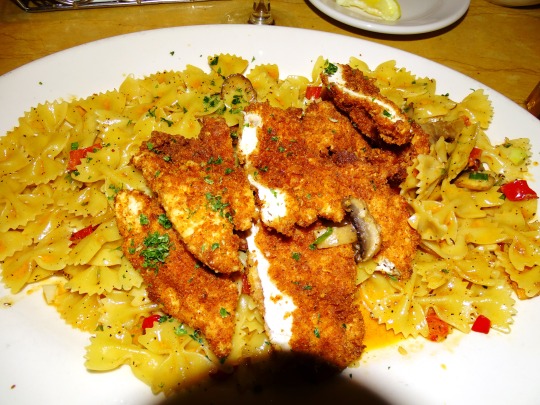
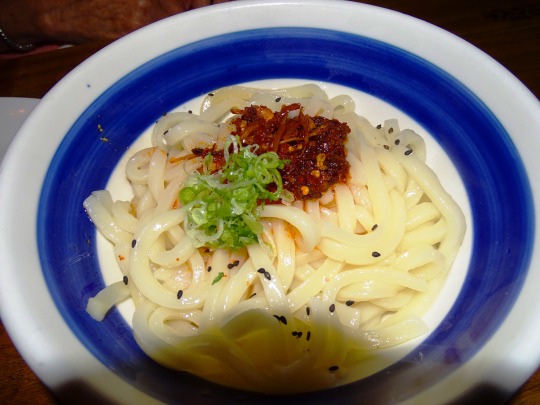
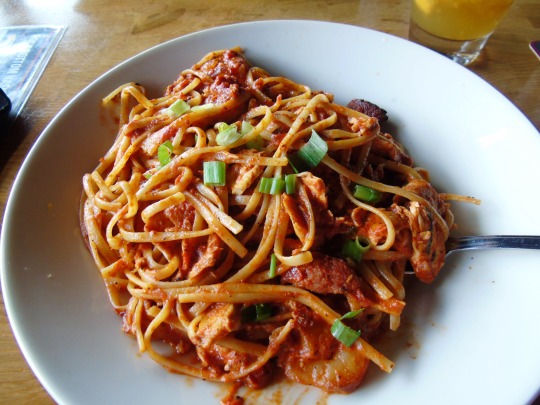

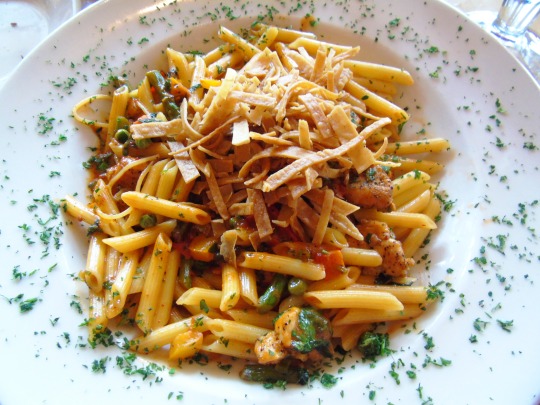
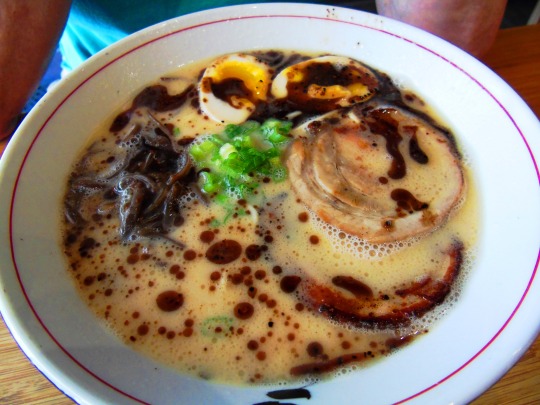
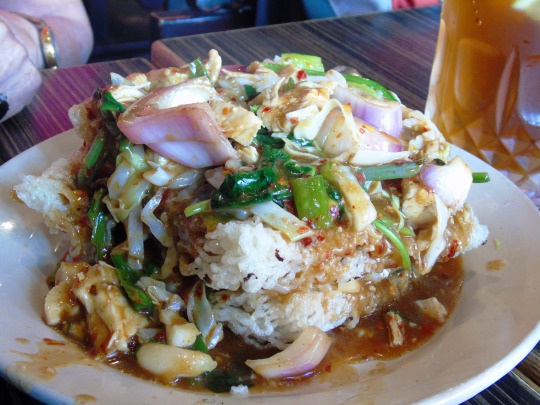
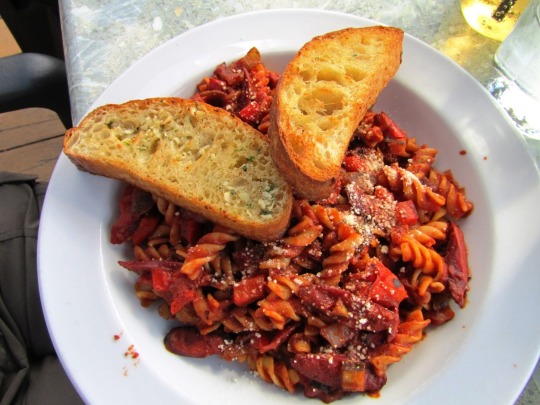
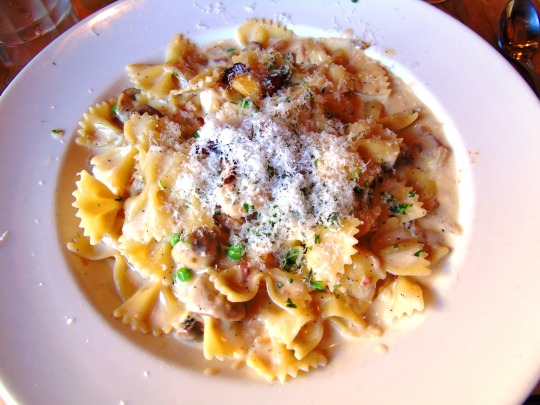
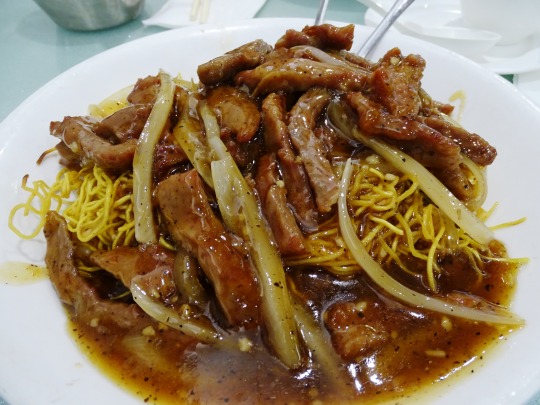
World Pasta Day
Life is too short, and I’m Italian. I’d much rather eat pasta and drink wine than be a size 0. Sophia Bush
Warm steaming spaghetti in a rich red sauce, littered with seasoned sausage, black olives, and mushrooms, or a rich Chicken Fettuccine in a creamy garlic white sauce that just absolutely blows your mind. There are over 600 shapes of pasta known to mankind, and their names are descriptive of their shapes. Spaghetti (‘cord’), vermicelli (‘little worms’), rotini (‘spirals’), fusili (‘spindles’), tortellini (‘little cakes’), linguini (‘little tongues’), conchiglie (‘shells’), fettucine (‘small ribbons’), penne (‘quills’) and capellini (‘fine hairs’) are the savoury little goodies that are essential to any pantry.While Italian food made it famous, it was only a gateway drug of pasta. Chinese Chow Mein and German Spaetzle are just a couple of the ways the world has taken pasta and fallen in love with it all over again.
World Pasta Day was brought into existence as part of the World Pasta Congress on the 25th of October in 1995. Experts from all over the world came together to discuss the glories of the noodle, with particular emphasis on the importance of spreading knowledge of the world’s panorama of pasta. This organization uses World Pasta Day to promote the eating of pasta, along with its cultural and culinary importance. Everything from encouraging consumers to try new pasta’s to providing important information to institutions and promotions of this increasingly popular food. Every country is encouraged to celebrate the day in their own way, while sharing the logo of the official organization and participating in the global strategy of World Pasta Day.
One of the best ways to celebrate World Pasta Day is preparing your favorite dish and enjoying the delicious flavors and textures that come along with your noodley favorite. There’s no way to renew your appreciation than by wolfing down this healthy and nutritious food. Or you can go all out, and host a World Pasta day party, where everyone comes together to share their favorite pasta dish, or exchange recipes with others to help the love of the noodle spread. Be sure to be prepared for one momentous night of rich and creamy carbohydrate overload, naps will be mandatory, but stomachs will be full!
For the truly daring, you can enhance the above by having your participants only bring pasta dishes they’ve never tried before. Try new noodle types, or making your own, experiment with sauces and flavors that may be outside your normal pallet. Did you know that Spaetzel was traditionally served with a sour sauce/gravy for Sauerbraten? It’s amazing! Imagine what else could unfold into your culinary world if you take World Pasta Day to broaden your horizons!
Source
#World Pasta Day#WorldPastaDay#25 October#food#USA#travel#vacation#Spicy Chicken Chipotle Pasta#Louisiana Chicken Pasta#Cajun Pasta#Rayu Udon#Beef Black Pepper#Toronto#Canada#restaurant#Crispy Rice Noodle Tower#Spicy Bison Peperoni & Roast Vegetables Pasta#Farfalle with Chicken and Roasted Garlic#Tonkotsu Black Ramen#Bun Thit Bo#San Diego#Revelstoke#San Francisco#Charlottetown
3 notes
·
View notes